Writing A Book Title In Your Essay – The Right Way
Table of contents
- 1 APA Style: How to Write Book Titles in Essays
- 2 APA Style Essay: Writing The Name of The Author
- 3 MLA Style Essay: Citing a Book Title
- 4 Chicago Style Essay: Writing the Book Title
- 5 Writing Various Types of Titles
- 6 Should We Underline or Italicize Book Titles?
When you are writing an academic essay , the book title and author’s name should be written in italics. However, if the book title is part of a larger work (such as a journal article), it should be underlined instead. So, you’re wondering how to write a book title in an essay?
Writing an essay with a book title can be tricky, particularly because each style guide has its own formatting rules for including titles in the main text. Whether you are using MLA, APA, Chicago, or Harvard referencing styles, you will need to consider how to properly format the book title. For more complicated literature-based assignments, seeking assistance from an admission essay writing service may be wise, as they specialize in writing essays that incorporate academic sources.
In this article, we will explore how to write both titles in an essay properly so that you avoid any mistakes!

APA Style: How to Write Book Titles in Essays
When writing an essay, you must follow the style guide provided by your professor. Some teachers may require you to use APA style and others MLA style. There are some rules on how to quote a book title in an essay. You should use italics and quotation marks when writing book titles in essays. For example: “ The Rape of Nanking: The Forgotten Holocaust of World War II. “
When writing a book title in APA Style , you should be aware of these rules:
Write the book title in italics and place it after the author’s name, which is presented in reverse order (last name first).
Use quotation marks around the headline of a chapter or article.
Capitalize proper names that are not common nouns (names of people, places, organizations), but do not capitalize words such as “and,” “or,” “to,” or “and/or.”
Do not capitalize prepositions that appear at the beginning of titles if they are followed by an article (e.g., “A,” “An”), but do capitalize prepositions at the beginning of titles if they are not followed by articles (“Of”).
The first word of the headline should be capitalized, as well as any other words after a colon or hyphen. For example, “The Elements of Style: Grammar for Everyone” or “Theories of Personality: Critical Perspectives.”
Capitalize proper names and words derived from them (e.g., the names of people, places, organizations), except proper nouns used generically (e.g., ‘a bed’).
APA Style Essay: Writing The Name of The Author
You should always use the full name and surname of the author in your APA essay because this will give proper credit to the writer. If you do not mention the author’s full name, people may not know who wrote what and will think you copied it from somewhere else. This will cause lots of problems for you and your reputation as well.
Make sure that all authors’ names appear in the same format in each entry. For example, if one person’s surname is Smith and another’s is Jones, both have first names starting with “J.” It may seem like they are being cited as different people when they’re actually written differently from each other on separate pages in your paper.
To write an APA essay without any issues, there are certain rules that you need to follow while writing an author’s name in APA essay:
- Use only one author’s name in your paper unless there are multiple authors
- If there are multiple authors, then use both their last names followed by the initials of their first names
- Only use initials of first names when there are three or more authors; otherwise, use full names with their last names
Example: Johnson, M.C., Carlson, M., Smith, J. N., & Hanover, L. E.
MLA Style Essay: Citing a Book Title
Now let’s discuss how to mention a book in an essay. The MLA Handbook for Writers of Research Papers, 7th edition, published by the Modern Language Association (2014), contains detailed rules about how to cite a book title in an essay.
The following guidelines will instruct you on how to refer to a book in an essay in MLA style :
- List your sources at the end of your paper, before the works cited page or bibliography.
- Use italics for titles of books, magazines, and newspapers, but not for articles within those publications, which should be placed in quotation marks.
- Include all relevant book information under two categories: “title” and “author.” In the former category, include the work’s title and its subtitle if there is one; do this even if neither appears on your title page (see below). In the latter category, include only primary authors who have written or edited an entire book; if there are multiple contributors, you should cite them separately under each.
The general format for citing the title of the book in an essay is as follows:
Author’s last name, first initial (Date). Title of Book with Subtitle if there is one. Publisher Name/Location of Publisher; Year Published
Chicago Style Essay: Writing the Book Title
One of the most important things to remember when writing in Chicago style is how to write the title of a book in an essay. To write a good book title in an essay, you should follow these steps:
- Write it at the beginning of your sentence.
- Capitalize it just like any other noun or proper noun.
- Put a comma after the title unless it’s an introductory clause or phrase. For example: “The Firm,” by John Grisham (not “by”) and “The Catcher in the Rye,” by J.D Salinger (not “and”).
- In addition to the book’s name, punctuation marks should also be italicized.
For example: Harry Potter and the Half-blood Prince: Children’s Edition
Writing Various Types of Titles
Now that we covered how to write a book title and author in an essay, it’s time to look at some different types of titles. When you write a book title in an essay, several things must be considered. Whether it’s a book, series, chapter title, editor’s name, or author’s name, how you write it depends on where it appears in your paper.
Here are some key rules for writing headings for novels:
- Use capital letters to write the title of the novel. For example, The Secret Garden by Frances Hodgson Burnett .
- Use italics and capital letters to write the name of the author and his/her other works mentioned in a book title—for example, Jane Austen’s Pride and Prejudice (1813) .
You should use quotation marks when writing headings of short title poems, articles, and stories.
However, before deciding which format to use, it is important to understand the main idea you want to express in your essay. Additionally, you could use essay papers for sale to help you accomplish your goal of writing an essay effectively.

Should We Underline or Italicize Book Titles?
It depends on which style guide you use. The Modern Language Association and Chicago Manual of Style both suggest using italics, while the American Psychological Association suggests using quotation marks with a few exceptions.
The way you write the title of a book in an essay is different depending on the instructions you were given. For example, if you’re writing an essay in APA style, use quotation marks around the book’s name. If you’re writing for MLA or Chicago style , however, italicize the book’s name instead. If you’re writing a handwritten essay instead of using a computer, capitalize and underline the book’s name.
Readers also enjoyed

WHY WAIT? PLACE AN ORDER RIGHT NOW!
Just fill out the form, press the button, and have no worries!
We use cookies to give you the best experience possible. By continuing we’ll assume you board with our cookie policy.
- Link to facebook
- Link to linkedin
- Link to twitter
- Link to youtube
- Writing Tips
How to Write Book Titles in Your Essays

3-minute read
- 26th May 2023
When writing an essay, you’re likely to mention other authors’ works, such as books, papers, and articles. Formatting the titles of these works usually involves using quotation marks or italics.
So how do you write a book title in an essay? Most style guides have a standard for this – be sure to check that first. If you’re unsure, though, check out our guide below.
Italics or Quotation Marks?
As a general rule, you should set titles of longer works in italics , and titles of shorter works go in quotation marks . Longer works include books, journals, TV shows, albums, plays, etc. Here’s an example of a book mention:
Shorter works include poems, articles, chapters of books, episodes of TV shows, songs, etc. If it’s a piece that’s part of a biggHow to Write Book Titles in Your Essayser work, the piece considered a short work:
Exceptions to the Rule
The rule for writing book titles in italics applies specifically to running text . If the book title is standing on its own, as in a heading, there’s no need to italicize it.
Additionally, if the book is part of a larger series and you’re mentioning both the title of the series and that of the individual book, you can consider the book a shorter work. You would set the title of the series in italics and place the book title in quotation marks:
Punctuation in Book Titles
Do you need to apply italics to the punctuation in a book title? The short answer is yes – but only if the punctuation is part of the title:
If the punctuation isn’t part of the title (i.e., the punctuation is part of the sentence containing the title), you shouldn’t include in the italics:
Find this useful?
Subscribe to our newsletter and get writing tips from our editors straight to your inbox.
Summary: Writing Book Titles in Essays
We hope you’ll now feel confident when you’re writing and formatting book titles in your essays. Generally, you should set the title in italics when it’s in running text. Remember, though, to check your style guide. While the standards we’ve covered are the most common, some style guides have different requirements.
And once you finish writing your paper, make sure you send it our way! We’ll make sure any titles are formatted correctly as well as checking your work for grammar, spelling, punctuation, referencing, and more. Submit a free sample to try our service today.
Frequently Asked Questions
How do you write the title of a book in a sentence.
Set the title of the book in italics unless the book is part of a larger work (e.g., a book that’s part of a series):
When do you use quotation marks for titles?
Place titles of shorter works or pieces that are contained in a larger work in quotation marks:
Share this article:
Post A New Comment
Got content that needs a quick turnaround? Let us polish your work. Explore our editorial business services.
How to insert a text box in a google doc.
Google Docs is a powerful collaborative tool, and mastering its features can significantly enhance your...
2-minute read
How to Cite the CDC in APA
If you’re writing about health issues, you might need to reference the Centers for Disease...
5-minute read
Six Product Description Generator Tools for Your Product Copy
Introduction If you’re involved with ecommerce, you’re likely familiar with the often painstaking process of...
What Is a Content Editor?
Are you interested in learning more about the role of a content editor and the...
4-minute read
The Benefits of Using an Online Proofreading Service
Proofreading is important to ensure your writing is clear and concise for your readers. Whether...
6 Online AI Presentation Maker Tools
Creating presentations can be time-consuming and frustrating. Trying to construct a visually appealing and informative...

Make sure your writing is the best it can be with our expert English proofreading and editing.

Thursday, February 23: The Clark Library is closed today.
APA Style (7th Edition) Citation Guide: Books & Ebooks
- Introduction
- Journal Articles
- Magazine/Newspaper Articles
- Books & Ebooks
- Government & Legal Documents
- Biblical Sources
- Secondary Sources
- Films/Videos/TV Shows
- How to Cite: Other
- Additional Help
Table of Contents
Book In Print With One Author
Book in Print More Than One Author
Chapters, Short Stories, Essays, or Articles From a Book (Anthology or Collection)
Article in an online reference book (e.g. encyclopedias, dictionaries).
Note: All citations should be double spaced and have a hanging indent in a Reference List.
A "hanging indent" means that each subsequent line after the first line of your citation should be indented by 0.5 inches.
This Microsoft support page contains instructions about how to format a hanging indent in a paper.
Authors/Editors
An author won't necessarily be a person's name. It may be an organization or company, for example Health Canada. These are called group or corporate authors.
If a book has no author or editor, begin the citation with the book title, followed by the year of publication in round brackets.
If an author is also the publisher, omit the publisher from the reference. This happens most often with corporate or group authors.
When a book has one to 20 authors or editors, all authors' names are cited in the Reference List entry. When a book has 21 or more authors or editors, list the first 19 authors followed by three spaced ellipse points (. . .) , and then the last author's name. Rules are different for in-text citations; please see the examples provided.
Cite author names in the order in which they appear on the source, not in alphabetical order (the first author is usually the person who contributed the most work to the publication).
Capitalize the first letter of the first word of the title. If there is a colon (:) in the title, also capitalize the first letter of the first word after the colon.
Capitalize the first letter of proper names in titles, such as names of places or people.
Italicize titles of journals, magazines, newspapers, and books. Do not italicize the titles of articles or book chapters.
Capitalize only the first letter of the first word of the article title. If there is a colon in the article title, also capitalize the first letter of the first word after the colon.
Place of Publication
Do not include the publisher location in the reference. Only for works associated with a specific location, like conference presentations, include the location. For cities in the US and Canada list the city name and the province or state code. For other countries, list the city name and the country. Examples: Toronto, ON ; Tokyo, Japan
Electronic Books
Don't include the format, platform, or device (e.g. Kindle) in the reference. Include the publisher name. For audiobooks, include the narrator and audiobook notation.
Ebooks from Websites (not from library databases)
If an ebook from a website was originally published in print, give the author, year, title, edition (if given) and the url. If it was never published in print, treat it like a multi-page website.
Book In Print With One Author or Editor
Author's Last Name, First Initial. Second Initial if Given. (Year of Publication). Title of book: Subtitle if given (edition if given and is not first edition). Publisher Name.
Note: If the named person is an editor, place "(Ed.)." after the name.
Mulholland, K. (2003). Class, gender and the family business . Palgrave McMillan.
In-Text Paraphrase:
(Author's Last Name, Year)
Example: (Mulholland, 2003)
In-Text Quote:
(Author's Last Name, Year, p. Page Number)
Example: (Mulholland, 2003, p. 70)
Book in Print More Than One Author or Editor
Last Name of First Author, First Initial. Second Initial if Given, & Last Name of Second Author, First Initial. Second Initial if Given. (Year of Publication). Title of book: Subtitle if given (edition if given and is not first edition). Publisher Name.
Note: Authors' names are separated by commas. Put a comma and an ampersand (&) before the name of the last author cited.
Note : For works with three or more authors, the first in-text citation is shortened to include the first author's surname followed by "et al."
Note: If the listed names are editors rather than authors, include "(Eds.)." at the end of the list of names. The below example shows a list of editors.
Reference List Example:
Kaakinen, J., Coehlo, D., Steele, R., Tabacco, L., & Hanson, H. (Eds.). (2015). Family health care nursing: Theory, practice, and research (5th ed.). F.A. Davis Company.
In-text Citation
Two Authors/Editors
(Kaakinen & Coehlo, 2015)
Direct quote: (Kaakinen & Coehlo, 2015, p. 57)
Three or more Authors/Editors
(Kaakinen et al., 2015)
Direct quote: (Kaakinen et al., 2015, p. 57)
Author's Last Name, First Initial. Second Initial if Given. (Year of Publication). Title of book: Subtitle if given (edition if given and is not first edition). Publisher Name. URL
Example from Website:
Rhode, D. L. (2002). Divorce, American style . University of California Press. http://www.escholarship.org/editions/view?docId=kt9z09q84w;brand=ucpress
Example: (Rhode, 2002)
Example: (Rhode, 2002, p. 101)
If no author or creator is provided, start the citation with the title/name of the item you are citing instead. Follow the title/name of the item with the date of publication, and the continue with other citation details.
Remember: an author/creator may be an organization or corporation, for example Health Canada. If you don't have a person's name as the author, but do have the name of an organization or corporation, put that organization/corporation's name as the author.
If and only if an item is signed as being created by Anonymous, use "Anonymous" where you'd normally put the author's name.
When you have no author, use a shortened version of the title where you'd normally put the author's name.
If you're citing something which is part of a bigger work, like an article from a magazine, newspaper, journal, encyclopedia, or chapter/short story from a book, put the shortened title in quotation marks in your in-text citation:
Example, paraphrase: ("A few words," 2014)
If you're citing an entire work, like a book, website, video, etc., italicize the shortened title in your in-text citation:
Example, paraphrase: ( A few words , 2014)
Author's Last Name, First Initial. Second Initial if Given. (Year of Publication). Title of chapter, article, essay or short story. In Editor's First Initial. Second Initial if Given. Editor's Last Name (Ed.), Title of book: Subtitle if given (edition if given and is not first edition, pp. first page number-last page number). Publisher Name.
Note: If you have more than one editor list their name(s) after the first editor listed in the book, giving their initials and last name. Put an ampersand (&) before the last editor's name.
When you have one editor the short form (Ed.) is used after the editor's name. If you have more than one editor use (Eds.) instead.
O'Neil, J. M., & Egan, J. (1992). Men's and women's gender role journeys: A metaphor for healing, transition, and transformation. In B. R. Wainrib (Ed.), Gender issues across the life cycle (pp. 107-123). Springer.
Note: If there is no editor given you may leave out that part of the citation.
(Author's Last Name, Year)
Example (2 authors): (O'Neil & Egan, 1992)
(Author's Last Name, Year, p. Page Number)
Example (2 authors): (O'Neil & Egan, 1992, p. 998)
Author's Last Name, First Initial. Second Initial if Given. (Year of Publication). Title of article. In Editor's First Initial. Second Initial if Given. Editor's Last Name (Ed.), Title of book: Subtitle if given (edition if given and is not first edition). Publisher Name. URL or DOI
Caviness, L. B. (2008). Brain-relevant education. In N. J. Salkind (Ed.), Encyclopedia of educational psychology . Sage Publications. https://login.uportland.idm.oclc.org/login?url=https://search.credoreference.com/content/entry/sageedpsyc/brain_relevant_education/0?institutionId=5407
Example (1 author): (Caviness, 2008)
Example (1 author): (Caviness, 2008, Focus on the brain section, para. 2)
Note: When there are no visible page numbers or paragraph numbers, you may cite the section heading and the number of the paragraph in that section to identify where your quote came from.
- << Previous: Magazine/Newspaper Articles
- Next: Government & Legal Documents >>
- Last Updated: Apr 30, 2024 1:29 PM
- URL: https://libguides.up.edu/apa
Have a language expert improve your writing
Run a free plagiarism check in 10 minutes, automatically generate references for free.
- Knowledge Base
- Referencing
- Referencing Books in Harvard Style | Templates & Examples
Referencing Books in Harvard Style | Templates & Examples
Published on 12 May 2020 by Jack Caulfield . Revised on 7 November 2022.
To reference a book in Harvard style , you need an in-text citation and a corresponding entry in your reference list or bibliography .
A basic book reference looks like this:
Try our free reference generator to create accurate Harvard references for all your sources:
Harvard Reference Generator
Instantly correct all language mistakes in your text
Be assured that you'll submit flawless writing. Upload your document to correct all your mistakes.

Table of contents
Edition or volume of a book, edited or translated book, book chapter, dictionary or encyclopedia, frequently asked questions about harvard referencing.
If the book you’re citing is a second or later edition (i.e. when the edition is stated on the title page or cover), specify this in your reference. Abbreviate ‘edition’ to ‘edn’ or ‘revised edition’ to ‘rev ed’.
When referencing a book published in multiple volumes, include the total number of volumes in your reference.
If you’re just referencing one volume, omit the total number but include the number and subtitle of the particular volume you’re referencing as part of the title.
The only proofreading tool specialized in correcting academic writing
The academic proofreading tool has been trained on 1000s of academic texts and by native English editors. Making it the most accurate and reliable proofreading tool for students.

Correct my document today
If a book specifies an editor and/or translator, this information should be included in the reference.
When a book has an editor in addition to the main author, the editor’s name is included later in the reference.
When the editor is the main author (i.e. when it’s their name on the cover), their name comes first. Use “ed.” for a single editor and “eds.” if there are multiple editors.
If you use a specific chapter or work from an edited collection, follow the format for referencing a book chapter instead.
When you reference a book that has been translated from another language, include the original language and the translator’s name.
Unlike other names, the translator’s name is not inverted: the initial comes first.
If a book contains chapters or works by various different authors, such as a collection of essays or an anthology of short stories, reference the specific chapter or work, followed by details of the book.
The chapter title appears in quotation marks, while the book title is italicized. At the end of the reference, specify the page range on which the chapter appears.
If a book is entirely written by one author, always reference the whole book, even if you only discuss one chapter.
Dictionaries, encyclopedias, and other reference works very often don’t list specific authors. In these cases, they are cited and referenced using their titles in the author position:
Where a reference work does have an author, it can be referenced like a normal book. Where different sections of a reference work are attributed to different authors, they can be referenced like chapters in an edited book.
Prevent plagiarism, run a free check.
When an ebook is presented like a printed book, with page numbers and publication details included, you can reference it in the same format as you would the print version.
Otherwise, the ebook format differs slightly: I nclude a link to where you found or purchased it online instead of publisher information. This link is generally just to the store or database you used, not the specific book.
In addition, in-text citations will have to use something other than page numbers when necessary, such as a percentage or location number. Use whatever marker is available on your device.
A Harvard in-text citation should appear in brackets every time you quote, paraphrase, or refer to information from a source.
The citation can appear immediately after the quotation or paraphrase, or at the end of the sentence. If you’re quoting, place the citation outside of the quotation marks but before any other punctuation like a comma or full stop.
In Harvard style , when you quote directly from a source that includes page numbers, your in-text citation must include a page number. For example: (Smith, 2014, p. 33).
You can also include page numbers to point the reader towards a passage that you paraphrased . If you refer to the general ideas or findings of the source as a whole, you don’t need to include a page number.
In Harvard referencing, up to three author names are included in an in-text citation or reference list entry. When there are four or more authors, include only the first, followed by ‘ et al. ’
In Harvard style referencing , to distinguish between two sources by the same author that were published in the same year, you add a different letter after the year for each source:
- (Smith, 2019a)
- (Smith, 2019b)
Add ‘a’ to the first one you cite, ‘b’ to the second, and so on. Do the same in your bibliography or reference list .
Cite this Scribbr article
If you want to cite this source, you can copy and paste the citation or click the ‘Cite this Scribbr article’ button to automatically add the citation to our free Reference Generator.
Caulfield, J. (2022, November 07). Referencing Books in Harvard Style | Templates & Examples. Scribbr. Retrieved 6 May 2024, from https://www.scribbr.co.uk/referencing/harvard-book-reference/
Is this article helpful?

Jack Caulfield
Other students also liked, a quick guide to harvard referencing | citation examples, harvard in-text citation | a complete guide & examples, harvard style bibliography | format & examples, scribbr apa citation checker.
An innovative new tool that checks your APA citations with AI software. Say goodbye to inaccurate citations!

How to Write Book Titles in Essays: APA, MLA, Chicago Styles
It’s your practical and up-to-point guide on how to write a book title in an essay. You’ll get the formatting rules and examples for citing book and author names in academic papers.
We’ve covered the top three citation styles: APA, Chicago, and MLA.
How to Write the Title of a Book in an Essay
First, remember the general rules of citing book names in academic works.
Here’s how to cite books in essays :
- Use capitalization. Every word of a book’s name goes in the title case, except prepositions, articles, and coordinating conjunctions.
- Use italics for longer and independent works. Use double quotations for shorter ones (poems, articles, book chapters, or play acts and scenes).
- Use single quotations for a book’s title within another title. (When citing monographs about literary works, for example.)
While capitalization rules depend on the citation style, some general tips have a place to be. Please, no capitalization for:
- Articles: a, the (unless the book title begins with it)
- Coordinating conjunctions and prepositions: of, and, or, but, for, to, nor, in, so (unless the book title begins or ends with it)
Subordinating conjunctions (although, unless, because, if) go in capital letters.
How to Write a Book Title in an Essay: APA
APA (American Psychological Association) is the most popular style for citing academic works. It’s common for the social sciences like Education, Psychology, Sociology, and others. The current edition: 7th (2019).
Book titles in APA stand for:
- Italics. (If a book name includes any punctuation, italicize it too.)
- Capitalization. (Capitalize all words longer than four letters , regardless of the part of speech. Also, use capital letters for two-part words and those coming after a dash or a colon.)
- Double quotations instead of italics. (When citing a short work like an article or a poem; when citing a book chapter or when the book is a part of an anthology.)
For example:
The Lord of the Rings but “The Fellowship of the Ring” (The latter is part of the trilogy.)
Related: How to Cite a Movie in APA Format
How to Write the Name of a Book in an Essay: Chicago
The Chicago Manual of Style is a guide by the University of Chicago. It’s common for fields like History, Fine Arts, and Business. The current edition: 17th (2017).
How to format book titles in Chicago:
- Italicize longer and independent works; put shorter ones in double quotations.
- Use italics for punctuation within a title.
- Capitalize all words except articles (a, the) and ALL prepositions or conjunctions (regardless of length).
For example:
In George Orwell’s 1984 , the author presents a dystopian society characterized by pervasive government surveillance and the suppression of individual freedom. The harrowing events in “Chapter 2,” where Winston Smith begins to rebel against the Party by starting a forbidden diary, mark a pivotal moment in the novel’s exploration of resistance against totalitarianism.
The style resembles the MLA format, but it’s flexible, allowing you to “break the rules if necessary.”
How to Write a Book Title in an Essay: MLA
MLA format stands for the Modern Language Association. It’s common for humanities like Literature, Culture, Linguistics, etc. The current edition: 8th (2016).
How to format books in MLA:
- Italicize all words, including punctuation and those of two parts or going after colons and hyphens.
- Capitalize all words except articles (a, the) , prepositions, and short conjunctions within a book title.
- Use double quotations instead of italics when writing a book chapter or a part of a book series.
In Little Women , Beth March dies in Chapter 40, “The Valley of the Shadow.”
Formatting Book Author Names in Papers
Use the author’s full name (first and last) to format it in your essay for proper credit.
If a book has two authors, use both last names and initials. For works with three or more authors, use the last name of the first one and add “et all.”
No need to italicize author names in papers.
Why Properly Cite Book Titles in Essays
The short answer:
You won’t get a high grade for an essay. Formatting blunders count as mistakes.
The longer answer:
- You prove writing skills and an understanding of the rules in academia.
- Your papers maintain consistency. It’s critical to stick to criteria to prevent confusion. The consistent format for book headings also serves to better scannability and readability.
- You learn to cite different types of references for your future projects.
Do you italicize book titles?
Yes, you put book titles in italics. Please italicize long and stand-alone works: books, movies, webpages, reports, or music albums. Shorter works’ titles (articles, essays, poems, songs, or book chapters) come in quotations. (1)
Do you underline book titles?
Underlining book titles is an outdated practice. Some still use it in handwritten essays, but it’s not a must-follow rule. Neither APA nor MLA (or Chicago) mentions underlining book names in academic papers.
How to use book title capitalization in texts?
Capitalize every word in a book’s title. Exceptions are articles (a, the), prepositions, and short (three or fewer letters) conjunctions in mid-titles.
Are books italicized in all formatting styles?
Yes, book titles come in italics in all styles: APA, MLA, and Chicago. When citing book chapters or a book as a part of a series, use quotation marks instead.
How to write a book author in an essay?
Use the author’s full name when citing their book in your papers. For works with several authors, mention their last names and initials. Unlike book titles, author names come in standard formatting with no italics.
References:
- https://english.csuci.edu/resources/essay-writing-essentials.htm
- Essay samples
- Essay writing
- Writing tips
Recent Posts
- Writing the “Why Should Abortion Be Made Legal” Essay: Sample and Tips
- 3 Examples of Enduring Issue Essays to Write Yours Like a Pro
- Writing Essay on Friendship: 3 Samples to Get Inspired
- How to Structure a Leadership Essay (Samples to Consider)
- What Is Nursing Essay, and How to Write It Like a Pro
How to Write a Book Title in an Essay (MLA, APA etc.)
Formatting your essay correctly ensures that you get full recognition for the hard work you put into it. Wondering what to do? There are two scenarios that lead you to the question of "how to write a book title in an essay":
- You have not been required to use a particular style guide, in which case consistency remains important.
- You have been instructed to use a particular style guide. You now simply need to ensure that you are familiar with its rules.
Regardless of which of these scenarios holds true for you, this guide is here to help.
How to Write a Book Title in an Essay
Many style manuals call on writers use title case and italics to format a book title. Title case rules vary slightly from one style guide to the next, but generally capitalize all important words — nouns, pronouns, verbs, and adverbs. Conjunctions and prepositions are not capitalized unless they are very long (generally more than four letters) or they appear at the beginning or end of a book title.
Writers who are not required to work with a specific style manual can't go wrong if they stick to this style. Some examples would be:
- To Kill a Mockingbird by Harper Lee
- The Gift of Fear and Other Survival Signals That Protect us From Violence by Gavin de Becker
- The Cat With a Feathery Tail and Other Stories by Enid Blyton
If, on the other hand, you're required to use a style guide, it will likely be one of these:
- MLA, commonly used in disciplines relating to literature and social sciences.
- APA, commonly used in psychology and other sciences.
- Chicago, often used in the publishing industry.
- Harvard style, commonly used in philosophy and social sciences.
These are certainly not the only "big players" in the style guide world, but they're ones it's good to be familiar with. There is overlap between these styles, but there are also major differences — so knowing one definitely does not mean you know the others, too.
Guidelines for Writing a Book Title in an Essay
Looking for a short and sharp answer, so you can get on with the rest of your essay? This is it.
This quick guide will help you reference the book title of your choosing in the body of your essay, but what about your Works Cited pages? Each style guide offers different rules, and we'll use the same book as an example to illustrate the differences.
- MLA uses the following format: Author Last Name, First Name. Title of Book . City of Publication, Publisher, Publication Year. Example: Card, Orson Scott. Ender's Game. Tor Books, 1985. (You only have to detail the city of publication if the book was published before 1900, the publisher has offices in many localities, or the publisher is not known in the US.)
- APA uses the following format: Author Last Name, First Name. (Year of Publication). Title of book. Example: Card, Orson Scott. (1985). Ender's game.
- Chicago style uses the following format: Author Last Name, First Name. Book Title: Subtitle . Place of publication: Publisher, Year. Example: Card, Orson Scott. Ender's Game . Tor Books, 1985.
- Harvard uses the following format: Author Last Name, First Initial. (Publication Year). Title . ed. City: Publisher. Example: Card, O. (1985). Ender's Game. Tor Books.
If, after researching, you cannot find relevant information about publication years, publishers, or the city in which a book was published, you may omit it. For a full guide, it is always best to have a physical copy of the latest edition of the style manual you are using. You can, however, get by without this if you need to.
Should you still not know what to do, it will be helpful for you to know that you can "generate" citations for a particular style manual with the help of online tools like Cite Me . These are not always accurate, so if you decide to use one, always check the citation manually.
Why Is Proper Formatting Important?
All of the well-known style manuals ultimately serve the very same set of purposes, although they were each developed for a particular niche. The goals of these style manuals are both explicit and implicit:
- Following a style guide ensures consistency throughout a document, in this case an essay.
- Consistency ensures that reader's understand precisely what the writer is talking about, without exerting any effort on figuring that out. Clarity is especially important in academic writing.
- By using a style guide within a certain discipline, you show that you understand the rules within that discipline. This adds credibility to your voice as a writer. You have done your homework, have ideally bought the style manual, and are part of the "in group".
- Sticking to a certain style guide makes it easier for relevant parties to check your references, which they can then use to perform further research.
Students are increasingly asked to refer to style guides at all levels, including in high school. In this case, formatting your essay correctly, in accordance with the right style manual, serves two additional purposes:
- You'll lose points if you don't do it right, offering you an additional reason to do your research.
- Getting used to these formats prepares you for further education. If you are in high school, it prepares you for college-level writing. If you are an undergraduate student, it prepares you for academic work at the graduate and post-graduate levels.
Can you start an essay with a book title?
Yes, you can start an essay with a book title. This is a valid stylistic choice, but you will always want to consider your introduction carefully.
How do you write a book title in handwriting?
Students sometimes ask whether it is acceptable to underline book titles instead of italicizing them. This practice indeed stems from a time in which most students wrote their essays by hand. Although it has largely fallen out of practice now, you can still underline a book title if you are handwriting your essay.
How do you write a book title and chapter in an essay?
You should mention the chapter title first: "Rat" from Ender's Game by Orson Scott Card. Consult the relevant style manual to ensure you get the formatting right.
Can you shorten a book title in an essay?
Yes, you can. Reference the full title the first time you mention it (for example: Furiously Happy: A Funny Book About Horrible Things ). The next time you mention the book, you may simply refer to Furiously Happy .
Related posts:
- How to Write the Date in MLA Format
- How To Write A Movie Title In An Essay
- Someone Walked Over My Grave - Meaning and Origin
- 14 Tips to Help you Write An Essay Fast
- Go Pound Sand - Meaning, Usage and Origin
- How to Write a DBQ (APUSH) Essay?
Leave a Reply Cancel reply
Your email address will not be published. Required fields are marked *
Home / Guides / Citation Guides / MLA Format / How to Cite an Essay in MLA
How to Cite an Essay in MLA
The guidelines for citing an essay in MLA format are similar to those for citing a chapter in a book. Include the author of the essay, the title of the essay, the name of the collection if the essay belongs to one, the editor of the collection or other contributors, the publication information, and the page number(s).
Citing an Essay
Mla essay citation structure.
Last, First M. “Essay Title.” Collection Title, edited by First M. Last, Publisher, year published, page numbers. Website Title , URL (if applicable).
MLA Essay Citation Example
Gupta, Sanjay. “Balancing and Checking.” Essays on Modern Democracy, edited by Bob Towsky, Brook Stone Publishers, 1996, pp. 36-48. Essay Database, www . databaseforessays.org/modern/modern-democracy.
MLA Essay In-text Citation Structure
(Last Name Page #)
MLA Essay In-text Citation Example
Click here to cite an essay via an EasyBib citation form.
MLA Formatting Guide
MLA Formatting
- Annotated Bibliography
- Bibliography
- Block Quotes
- et al Usage
- In-text Citations
- Paraphrasing
- Page Numbers
- Sample Paper
- Works Cited
- MLA 8 Updates
- MLA 9 Updates
- View MLA Guide
Citation Examples
- Book Chapter
- Journal Article
- Magazine Article
- Newspaper Article
- Website (no author)
- View all MLA Examples
How useful was this post?
Click on a star to rate it!
We are sorry that this post was not useful for you!
Let us improve this post!
Tell us how we can improve this post?
To cite your sources in an essay in MLA style, you need to have basic information including the author’s name(s), chapter title, book title, editor(s), publication year, publisher, and page numbers. The templates for in-text citations and a works-cited-list entry for essay sources and some examples are given below:
In-text citation template and example:
For citations in prose, use the first name and surname of the author on the first occurrence. For subsequent citations, use only the surname(s). In parenthetical citations, always use only the surname of the author(s).
Citation in prose:
First mention: Annette Wheeler Cafarelli
Subsequent occurrences: Wheeler Cafarelli
Parenthetical:
….(Wheeler Cafarelli).
Works-cited-list entry template and example:
The title of the chapter is enclosed in double quotation marks and uses title case. The book or collection title is given in italics and uses title case.
Surname, First Name. “Title of the Chapter.” Title of the Book , edited by Editor(s) Name, Publisher, Publication Year, page range.
Cafarelli, Annette Wheeler. “Rousseau and British Romanticism: Women and British Romanticism.” Cultural Interactions in the Romantic Age: Critical Essays in Comparative Literature , edited by Gregory Maertz. State U of New York P, 1998, pp. 125–56.
To cite an essay in MLA style, you need to have basic information including the author(s), the essay title, the book title, editor(s), publication year, publisher, and page numbers. The templates for citations in prose, parenthetical citations, and works-cited-list entries for an essay by multiple authors, and some examples, are given below:
For citations in prose, use the first name and surname of the author (e.g., Mary Strine).
For sources with two authors, use both full author names in prose (e.g., Mary Strine and Beth Radick).
For sources with three or more authors, use the first name and surname of the first author followed by “and others” or “and colleagues” (e.g., Mary Strine and others). In subsequent citations, use only the surname of the first author followed by “and others” or “and colleagues” (e.g., Strine and others).
In parenthetical citations, use only the author’s surname. For sources with two authors, use two surnames (e.g., Strine and Radick). For sources with three or more author names, use the first author’s surname followed by “et al.”
First mention: Mary Strine…
Subsequent mention: Strine…
First mention: Mary Strine and Beth Radick…
Subsequent mention: Strine and Radick…
First mention: Mary Strine and colleagues …. or Mary Strine and others
Subsequent occurrences: Strine and colleagues …. or Strine and others
…. (Strine).
….(Strine and Radick).
….(Strine et al.).
The title of the essay is enclosed in double quotation marks and uses title case. The book or collection title is given in italics and uses title case.
Surname, First Name, et al. “Title of the Essay.” Title of the Book , edited by Editor(s) Name, Publisher, Publication Year, page range.
Strine, Mary M., et al. “Research in Interpretation and Performance Studies: Trends, Issues, Priorities.” Speech Communication: Essays to Commemorate the 75th Anniversary of the Speech Communication Association , edited by Gerald M. Phillips and Julia T. Wood, Southern Illinois UP, 1990, pp. 181–204.
MLA Citation Examples
Writing Tools
Citation Generators
Other Citation Styles
Plagiarism Checker
Upload a paper to check for plagiarism against billions of sources and get advanced writing suggestions for clarity and style.
Get Started
- PRO Courses Guides New Tech Help Pro Expert Videos About wikiHow Pro Upgrade Sign In
- EDIT Edit this Article
- EXPLORE Tech Help Pro About Us Random Article Quizzes Request a New Article Community Dashboard This Or That Game Popular Categories Arts and Entertainment Artwork Books Movies Computers and Electronics Computers Phone Skills Technology Hacks Health Men's Health Mental Health Women's Health Relationships Dating Love Relationship Issues Hobbies and Crafts Crafts Drawing Games Education & Communication Communication Skills Personal Development Studying Personal Care and Style Fashion Hair Care Personal Hygiene Youth Personal Care School Stuff Dating All Categories Arts and Entertainment Finance and Business Home and Garden Relationship Quizzes Cars & Other Vehicles Food and Entertaining Personal Care and Style Sports and Fitness Computers and Electronics Health Pets and Animals Travel Education & Communication Hobbies and Crafts Philosophy and Religion Work World Family Life Holidays and Traditions Relationships Youth
- Browse Articles
- Learn Something New
- Quizzes Hot
- This Or That Game
- Train Your Brain
- Explore More
- Support wikiHow
- About wikiHow
- Log in / Sign up
- Education and Communications
- College University and Postgraduate
- Academic Writing
How to Write a Book Name in an Essay
Last Updated: February 14, 2024 Fact Checked
This article was co-authored by Noah Taxis and by wikiHow staff writer, Danielle Blinka, MA, MPA . Noah Taxis is an English Teacher based in San Francisco, California. He has taught as a credentialed teacher for over four years: first at Mountain View High School as a 9th- and 11th-grade English Teacher, then at UISA (Ukiah Independent Study Academy) as a Middle School Independent Study Teacher. He is now a high school English teacher at St. Ignatius College Preparatory School in San Francisco. He received an MA in Secondary Education and Teaching from Stanford University’s Graduate School of Education. He also received an MA in Comparative and World Literature from the University of Illinois Urbana-Champaign and a BA in International Literary & Visual Studies and English from Tufts University. This article has been fact-checked, ensuring the accuracy of any cited facts and confirming the authority of its sources. This article has been viewed 63,090 times.
When you’re writing an essay that includes a book title, it can be confusing to write the title correctly. However, it’s really easy once you know the rules. How you write the title will vary a little bit depending on the style your instructor assigns and if you are typing or handwriting the essay. Luckily, it's easy to follow the rules for writing a book name in an essay.
Writing Help

Typing an Essay in MLA or Chicago Style Format

- For example, you would write To Kill a Mockingbird , The Lord of the Rings , or Wuthering Heights .

- If you have the book name in front of you, you can just copy it down as it is printed.
- Articles include a, an, and the.
- Prepositions include at, in, on, of, about, since, from, for, until, during, over, above, under, underneath, below, beneath, near, by, next to, between, among, and opposite.
- Coordinating conjunctions include the FANBOYS, which are for, and, not, but, or, yet, and

- For example, you would write the name of William Faulkner’s novel Absalom, Absalom! with both the comma and the exclamation point in italics.

- If the highlight bar goes away, try again, making sure that you don’t click anywhere on the page after you highlight the book name.

- Alternatively, you can press the italicize icon before you type the title.
- If you’re using Microsoft Word to type your essay, the italicize key may appear if you hover over the highlighted book name.

- If the next word after your title appears italicized when you resume typing, simply highlight it and click the italicize icon to remove the formatting.

- For example, The Lord of the Rings trilogy is sometimes published in one volume. In this case, you could write the name of the first novel as "The Fellowship of the Ring" when citing it in an essay.
Typing an Essay in APA Format

- Capitalize the first letter of the words, not the entire word.
- If the word is a two-part hyphenated word in the title, you should capitalize both words. For example, you would write Blue River: The Trial of a Mayor-Elect .
- If there is a dash or colon in the title, you should capitalize the word after the punctuation, regardless of how long the word is. As above, you would write Blue River: The Trial of a Mayor-Elect .

- For example, you would write Philip K. Dick’s Do Androids Dream of Electric Sheep? with the question mark italicized.

- If the book name is not highlighted, left click and drag your cursor again, making sure that you don’t click again anywhere on the page.

- If you are using Microsoft Word, the italics icon may appear when you hover over the highlighted book title. It’s okay to click this key.

Handwriting an Essay

- For MLA and Chicago style essays, capitalize the first word of the book name and every word other than articles, prepositions, or coordinating conjunctions. For example, write The Lord of the Rings .
- If you’re using APA style, capitalize the first word and all words longer than 4 letters. [9] X Research source This means you would write Public Policy in Local Government .

- If you’re writing on lined paper, it may help to follow along the line of the paper. However, make sure your line is dark enough so that your instructor will see that you properly underlined the book name.

- For example, you would write Judy Blume’s Are You There, God? It’s Me, Margaret by underlining the punctuation marks as well as the words.
Expert Interview

Thanks for reading our article! If you’d like to learn more about academic writing, check out our in-depth interview with Noah Taxis .
- ↑ https://owl.purdue.edu/owl/research_and_citation/mla_style/mla_formatting_and_style_guide/mla_general_format.html
- ↑ https://owl.purdue.edu/owl/subject_specific_writing/writing_in_literature/writing_about_literature/formatting.html
- ↑ https://www.grammarly.com/blog/underline-or-italicize-book-titles/
- ↑ https://askus.library.wwu.edu/faq/116757
- ↑ https://libguides.up.edu/apa/books_ebooks
- ↑ https://apastyle.apa.org/style-grammar-guidelines/italics-quotations/italics
Community Q&A
You Might Also Like

About This Article

- Send fan mail to authors
Did this article help you?

Featured Articles

Trending Articles

Watch Articles

- Terms of Use
- Privacy Policy
- Do Not Sell or Share My Info
- Not Selling Info
wikiHow Tech Help Pro:
Develop the tech skills you need for work and life

How to Write a Book Title and Author in an Essay?
This post may contains affiliate links. If you click and buy we may make a commission, at no additional charge to you. Please see our disclosure policy for more details.
So, you’re writing an essay, and you’re referencing a book. But how on earth do you write and cite the title and the author’s name correctly?
Do you use quotation marks? Italics? Punctuation? And what about capitalization?
The answer is a little more complicated than you might think. It all depends on the style of essay you’re writing, but once you’ve familiarized yourself with the rules for each one, it’s easy to mention and cite any book title and author’s name correctly, so you can get top marks from your instructor, each and every time.
Table of Contents
The Correct Way to Write a Book’s Title And Author in an Essay
In this post, we’ll look at the three most common essay formats used in the US and learn how to properly display book titles and author names in each one.
The Most Popular Essay Formats
The three most commonly used essay formats found in schools, universities, and higher education institutions across America are known as APA, MLA, and Chicago style.
The format your professor assigns will depend on the subject matter, the department, the purpose of the essay, and the instructor’s individual preferences.
APA stands for the American Psychological Association. This is the go-to format for scientific essays, including many social and behavioural sciences.
MLA stands for Modern Language Association and is the most frequently used format in humanities and liberal arts subjects, such as literature and history.
Chicago format, also known as Turabian after its creator, Kate L. Turabian, is commonly used in the publishing world and also in subjects such as anthropology, history, and selected social sciences.
Why is Using The Correct Format so Important?
The short answer is that you’ll receive a lower grade if you don’t.
But of course, there are many good reasons why proper formatting is important when writing papers and essays.
1. Consistency
Formats like APA, MLA, and Chicago provide a strict set of criteria to stick to throughout an essay, ensuring consistency.
Consistency avoids confusion for the reader and helps them to quickly and easily identify what the writer is trying to say.
2. References And Research
Sticking with one style or format makes it easier for readers to check citations and conduct further research into the chosen topic.
3. Demonstrating Understanding
In academic settings, adhering to a particular style guide, such as APA, MLA, or Chicago, demonstrates your understanding of the rules and principles of written material within that field.
This shows that you don’t just understand the subject; you also know how to write about it.
4. Preparation For Future Studies
Suppose you’re a high school student or a college undergrad, familiarizing yourself with the basic principles of essay formatting. In that case, it is a great way to prepare yourself for your future academic pursuits, especially if you plan to progress onto a graduate or postgraduate program.
How to Write a Book’s Title in The Main Body of an APA Style Essay?
Here are the key rules to remember when writing book titles in the main body of an APA-style essay:
- Use quotation marks (not italics) on either side of the book’s title (with the exception of the holy texts like the Bible and reference works like dictionaries and almanacs).
- The first word of the title should be capitalized.
- All words and terms containing more than four letters or symbols should be capitalized.
- Any two-part words containing a hyphen should be capitalized.
- Words placed directly after a colon or dash should also be capitalized.
For example, “Slaughterhouse-Five”
How to Write a Book’s Title in The Main Body of an MLA or Chicago Style Essay?
MLA and Chicago-style essays use similar rules when it comes to mentioning book titles in the main body of an essay. Here are the key things to remember when using either of these formats:
- The book’s title should be displayed in italics (not quotation marks), with the exception of holy texts like the Bible.
- If the title contains punctuation, this should be italicized, too.
- All verbs, nouns, and adjectives should be capitalized.
- If you’re referring to a chapter or mentioning a book alongside the series it belongs to, use quotation marks, not italics.
For example,
O ne Flew Over the Cuckoo’s Nest by Ken Kesey, or “A Clash of Kings” from A Song of Ice and Fire by George R.R. Martin
1. Avoid Capitalizing Minor Words
Unless they appear as the first word in a title, the following words should be displayed in lowercase.
- Prepositions , such as on, in, at, and from.
- Articles , such as the, a, and an.
- Coordinating conjunctions , such as so, and, yet, but, and for.
This might sound a little complex at first, but it’s pretty simple and intuitive once you get the hang of it.
99% of the time, the book’s title as it is displayed on the front cover is correct for both MLA and Chicago-style essays.
How to Write a Book’s Title in The Main Body of a Handwritten Essay?
Handwritten essays used to be the norm, but these days, they’re most definitely the exception.
Still, there may be some instances where you’re asked to handwrite an essay rather than type it, in which case, you should follow the rules below.
1. Capitalization
The capitalization rules for writing book titles in the main body of a handwritten essay are the same as with typed essays.
So, if you’re handwriting an APA-style essay, make sure to capitalize the first letter of the first word in the title and do the same for every word containing more than four letters.
And when handwriting an MLA or Chicago-style essay, capitalize the first letter of the first word of the title and do the same for every word except for articles, prepositions, or coordinating conjunctions.
2. Underlining
No matter the format, book titles should always be underlined when handwriting an essay
- Underline the complete title, including any words that come after a colon or dash
- Underline any punctuation that appears in the book’s title
- Avoid underlining each word separately; always use one continuous line
- Make your line as straight as possible by using a ruler or following the line on the paper
How to Cite a Book And its Author in a References or Works Cited Page?
So, now you know how to write the title of a book mentioned in the body of an essay.
But what do you do when you need to cite a book and its author in your references or works cited page?
To keep it simple, I’ll use Lucy Maud Montgomery’s 1908 classic children’s novel , Anne of Green Gables, as an example for each essay style.
1. Book Citations in APA Style
Here’s the proper format for citing authors and their book titles in APA:
Last Name, First Names. (Year the book was published). Book title .
For example, Montgomery, Lucy Maud. (1908). Anne of Green Gables.
2. Book Citations in MLA Style
Here’s the proper format for citing authors and their book titles in MLA:
Last Name, First Names. Book title . City of Publication, Publisher, Year the book was published.
Note: You only need to include the city of publication if the book was published before 1900 or if the publisher is not based in the US.
For example, Montgomery, Lucy Maud. Anne of Green Gables. L.C. Page & Co., 1908.
3. Book Citations in Chicago Style
Here’s the proper format for citing authors and their book titles in Chicago style:
Last Name, First Names. Book Title: Subtitle . City of publication: Publisher, Year the book was published.
Note: Just like with MLA style, you only need to include the city of publication if the book was published before 1900 or if the publisher is not based in the US.
For example, Montgomery, Lucy Maud. Anne of Green Gables . L.C. Page & Co., 1908.
4. Book Citations in a Hand Written Essay
If you’re handwriting an essay, you’ll no doubt be handwriting your references or works cited page, too.
In this case, you should still follow the appropriate formatting rules above in relation to the chosen essay style.
But where a title appears in italics in a printed essay, in a handwritten essay, it should be neatly underlined instead.
Missing Information
If you’ve searched high and low for a book’s publisher, publication date, or the city in which it was published, but you still can’t find the information, it’s generally acceptable to leave it out.
Essay writing is a skill that takes practice, and at first, the rules and principles of the different formats can seem complex. This is especially true when you’re writing about books and their authors or citing other people’s work.
But hopefully, this post has helped explain the structures used in each of the most commonly used formats so that next time you write an essay, you can be confident that you’re doing it right.
Leave a Comment Cancel reply
Your Daughter Has Become a Mother—Now Who’s in Charge?

Our editors handpick the products that we feature. We may earn commission from the links on this page.
“You never stop being a mother.”
I remember my mother saying this.
When I was a child, I didn’t know why she said it. I knew that she would always be my mother. I knew that motherhood was permanent; I knew our relationship would never change. But being a child is only partly permanent; it’s also partly transitional. The word means not only “offspring” but “young,” and you will always be offspring, but you will not always be young.
As a teenager, I chafed at her relentlessly maternal aspect. I was no longer a child. Why did she still insist on being a mother? I wouldn’t understand until I became a mother myself.
Motherhood creates a new self, driven by urgent, primal responsibility. Suddenly you are holding a hot, screaming, desperate baby, whose cries deliver electric shocks to your nervous system. She will die if you don’t care for her. You are the first responder to everything: the high fever, the hot stove, the rusty nail. You choose her food, her clothes, her books, her bedtime. You are in charge of her life. You are at the center of it.
But what happens when your daughter becomes an adult? With her own separate life? With her own house and her own spouse? What happens when she becomes a mother herself? It’s joyful but confusing. Now you are both mothers. Who’s in charge?
A friend of mine went to stay with her daughter on the birth of her first child. This was my first friend to become a grandmother, and I wanted to learn the new territory. “What did you do?” I asked. “Oh, we had a great time,” my friend said blandly.
“No,” I said, “what did you do ?”
“The dishes,” my friend said, coming clean. “The laundry.”
So this was how it worked! This was the new role.
A shift has occurred: You are no longer in charge of anything. You now have a supporting role. Your daughter will choose the food, clothes, books, bedtime. She has her own theories, her own rules.
This is a surprise: Weren’t your rules the right ones? So sensible and correct? But your daughter is now the center of her child’s life, as you once were of yours. You have no choice but to accommodate yourself to the new administration.
I have friends who ask permission to pick up a child at school and take him to the park, or out to lunch. Anything for a little one-on-one. I have friends who beg for a phone call from the busy mom. But the busy mom has her own life! She has her own friends. She has a job. She wants to take vacations without you! She assumes that you have your own life as well.
.css-meat1u:before{margin-bottom:1.2rem;height:2.25rem;content:'“';display:block;font-size:4.375rem;line-height:1.1;font-family:Juana,Juana-weight300-roboto,Juana-weight300-local,Georgia,Times,Serif;font-weight:300;} .css-mn32pc{font-family:Juana,Juana-weight300-upcase-roboto,Juana-weight300-upcase-local,Georgia,Times,Serif;font-size:1.625rem;font-weight:300;letter-spacing:0.0075rem;line-height:1.2;margin:0rem;text-transform:uppercase;}@media(max-width: 64rem){.css-mn32pc{font-size:2.25rem;line-height:1;}}@media(min-width: 48rem){.css-mn32pc{font-size:2.375rem;line-height:1;}}@media(min-width: 64rem){.css-mn32pc{font-size:2.75rem;line-height:1;}}.css-mn32pc b,.css-mn32pc strong{font-family:inherit;font-weight:bold;}.css-mn32pc em,.css-mn32pc i{font-style:italic;font-family:inherit;} A shift has occurred: You are no longer in charge of anything. You now have a supporting role.
This is like starting a new job. You must learn the culture and respect the power structure. You must respect it because you can’t afford to get fired. You will still feel like the first responder, the alarm will never stop sounding for you, but now you must learn to become a second responder. This role is not instinctive; it’s acquired. It opposes all those feminist years of confidence and assertion. Assertion—so useful in soothing in fearful 4-year-old—is now the least appropriate response. Now mum is the word.
Learning the new role may be the most difficult part of motherhood. It may feel as though everything you can offer is being rejected. But this is not the case: You have already given your daughter all those years of yourself. She has absorbed what you have offered. And anyway, who would not learn a difficult role in order to stay close to a beloved daughter? Because you never stop being a mother.
Nor do you ever stop being a child. Whatever you do, you do in relation to your parents, whether you know it or not.
When I was in my 40s, I was forging my own life. My parents had forged theirs. I didn’t call them every day, or take vacations with them. I was one of five children. I thought my parents didn’t need me and I didn’t need them. They both led very long lives, reaching the ages of 98 and 101, and at the end, they were in an assisted living place. Once, at the close of a visit, I said goodbye to them in their pleasant apartment on the second floor. I went downstairs and got into my car. As I backed out of the parking lot, I glanced up. My parents, tiny now, and frail, were standing in their window, which they had laboriously dragged open. Together, they were waving and smiling at me. They had not gone back to their chairs to read, or down the hall to watch a movie. They had pulled open the window for a last glimpse of their daughter. Who was leaving them, again.
Throughout our lives, our connections shift. As we grow older, we move back and forth in relation to each other. When one leans in, the other may lean out, in a choreography of frustration. But we are still partners in the dance. Perhaps the most we can do is stay aware. Remember who came before, and who comes after. Embrace whomever you can reach.
Leaving, by Roxana Robinson

Why Every Kid Needs a Kooky Grandma
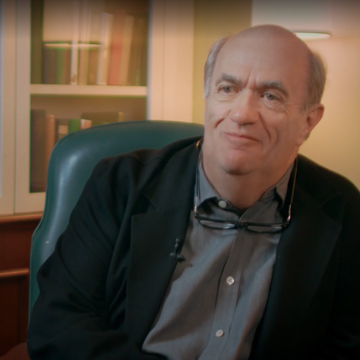
Everything You Need to Know About Colm Tóibín

All 105 Books in Oprah’s Book Club
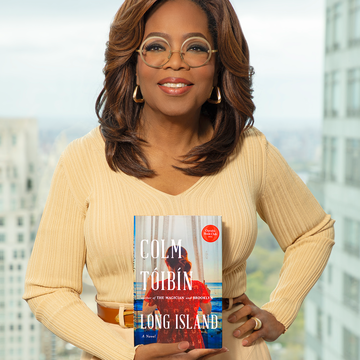
Oprah Announces Her 105th Book Club Pick
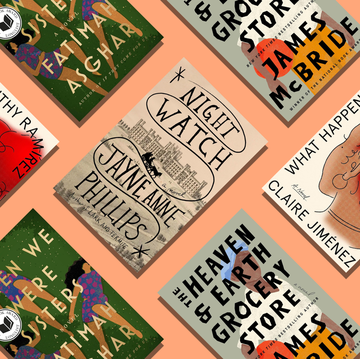
The Award-Winning Books You’ll Actually Love

How This Styrofoam Cup Held Together a Family
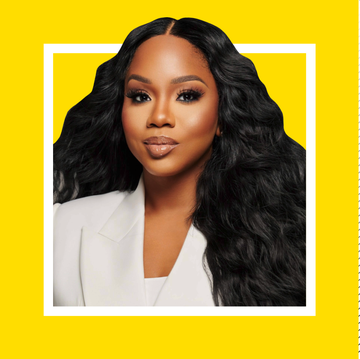
How to Feel Powerful in Every Setting
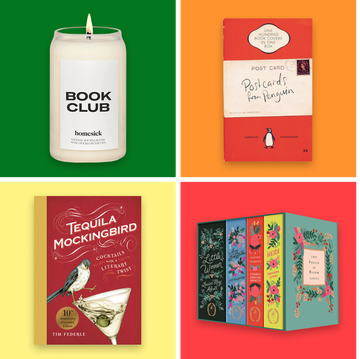
50 Unique Gifts for Book Lovers
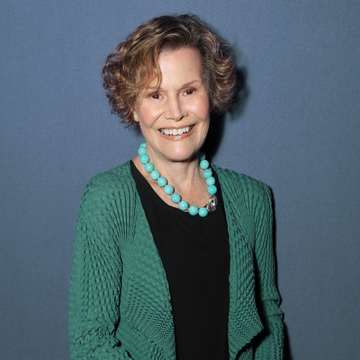
Judy Blume on Why She Quit Writing
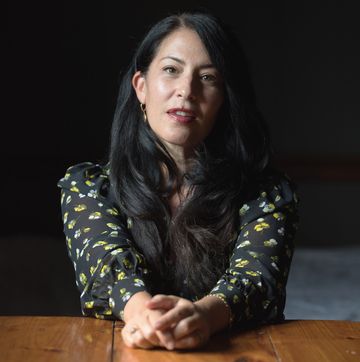
An Unexpected Remedy for Anxious Thoughts

Cheslie Kryst’s Mother Is Honoring Her Legacy
Kennebec Journal and Morning Sentinel
Account Subscription: ACTIVE
Questions about your account? Our customer service team can be reached at [email protected] during business hours at (207) 791-6000 .
- Maine Authors
- Life & Culture
BUSHNELL ON BOOKS: ‘Pete and Alice in Maine’ and ‘Tributaries: Essays from Woods and Waters’
A satisfying debut novel from Caitlin Shetterly, and a collection of essays from Maine fishing guide Ryan Brod.

You are able to gift 5 more articles this month.
Anyone can access the link you share with no account required. Learn more .
With a Kennebec Journal and Morning Sentinel subscription, you can gift 5 articles each month.
It looks like you do not have any active subscriptions. To get one, go to the subscriptions page .
Loading....
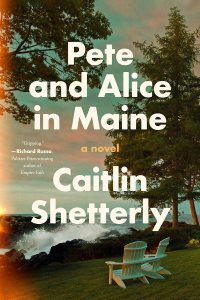
PETE AND ALICE IN MAINE by Caitlin Shetterly; Harper, 2023; 256 pages, $28.99; ISBN 978-0-06-324266-2.
PETE AND ALICE IN MAINE
Marriage is not a thing, it’s a process that takes effort. French author Guy de Maupassant (1850-1893) tells us just how tenuous that effort can be: “It is better to be unhappy in love than unhappy in marriage, but some people manage to do both.” And that describes the marriage of Pete and Alice perfectly.
Maine’s Caitlin Shetterly is the award-winning author of nonfiction books, but this is her debut novel, a sad, gritty, visceral indictment of marriage and parenthood that is both satisfying and profoundly painful to read. Shetterly is a very talented writer with a keen eye for character, dialogue, detail and plot, accurately portraying a toxic marriage circling the drain and everybody in the family knows it but does nothing about it.
In early 2020 Alice, Pete and their two young daughters flee New York City to their second home in Maine, to escape the Covid pandemic. He’s a Wall Street financier, she’s a mother and aspiring writer who’s never been published. Alice’s ultimatum to Peter leads to conflict and an unwelcome arrival in Maine where folks are suspicious and unhelpful.
Quarantine and months of isolation produce despair, fear, arguments, indecision and more ultimatums resulting in deep fractures in the couple’s relationship. Their daughters witness the fights and tension and are adversely affected. Alice feels she has lost her personal identity: “I woke up one day in a life I didn’t recognize.” Then she learns Pete has a lover back in the city.
When confronted with his infidelity, Pete says it’s over and he can change, but Alice knows she can never trust or forgive him. She issues a final ultimatum and then makes a frightening discovery. This is a well-written but tough read proving de Maupassant was right. Advertisement
TRIBUTARIES: ESSAYS FROM WOODS AND WATERS
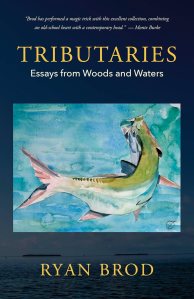
TRIBUTARIES: ESSAYS FROM WOODS AND WATERS by Ryan Brod; Islandport Press, 2023; 188 pages, $18.95; ISBN 978-1-952-14376-2.
Not since Fly Rod Crosby (1854-1946) has anyone written so eloquently about fishing than Ryan Brod in his debut book “Tributaries.”
Born and raised in Maine, Brod is a registered Maine fishing guide, teaches writing at the University of New England, and is the documentary filmmaker of “Hardwater,” a 2012 movie about the tradition of ice-fishing. This book is a collection of 22 essays, stories about fishing, hunting, his father, fishing friends, other guides and New York City guide clients.
Brod’s passion of fishing seems all-consuming, as he writes about learning to fish from his father, trips to the Allagash to fish for muskie, trips to the Florida Keys to fish for tarpon, and his rapt enjoyment of ice-fishing in Maine. His stories are vividly colorful and full of angling wisdom, along with unexplained fishing jargon only a fisherman will understand: shock tippet, streamers and poppers, fluorocarbon leader.
The stories of fishing with his father are tender and loving, their easy companionship is a delight to read. Brod’s story “Lost Voices” pays heartfelt tribute to an old friend, “one of the greatest fishermen I’ve ever seen.” His story “A Day on the Ice” is hilarious, as he tells of the antics of seven young men from New York City on their first ice-fishing experience on Messalonskee Lake.
Brod also includes excellent stories of hunting moose, deer and turkey, but the fishing tales take center stage. In one he lists all the things he loves about ice-fishing, including “I love cold, still nights,” and “I love footwarmers that last till 4 p.m.” Also, learn about the wily snook, fishing etiquette, and why you don’t ever want to catch the dreaded “Duck Itch.”
Clearly, Brod agrees with the unknown pundit: “A bad day fishing is better than a good day working.”
Bill Bushnell lives and writes in Harpswell.
Comments are not available on this story.
Send questions/comments to the editors.
Daily Headlines
- Enter your email
- Phone This field is for validation purposes and should be left unchanged.
87-year-old man injured in Madison rollover crash
Truck carrying 15 million bees rolls over on i-95 in clinton, update: augusta man arrested following 8-hour standoff with police in sidney, crash closes route 139 in unity township, ever have $2 million in illegal drugs sent to your house by mistake someone in winslow did., member log in.
Please enter your username and password below. Already a subscriber but don't have one? Click here .
Not a subscriber? Click here to see your options
10 books to add to your reading list in May
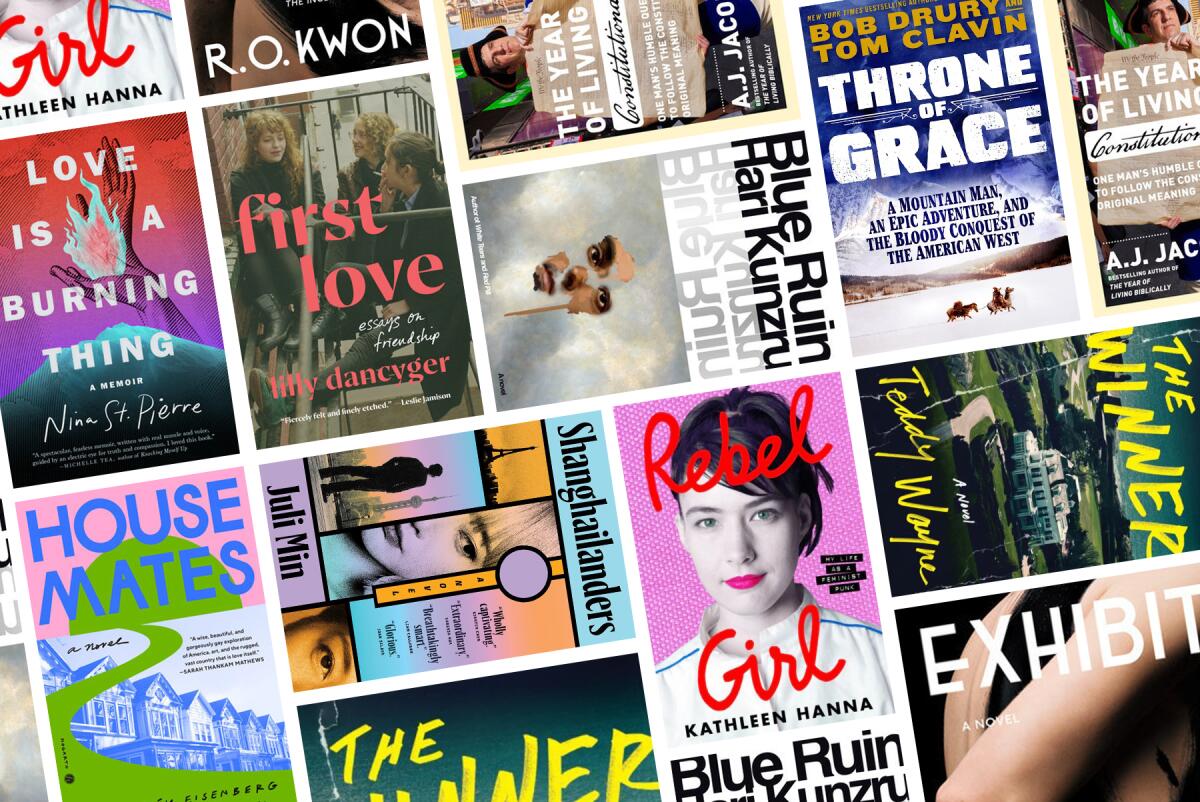
- Show more sharing options
- Copy Link URL Copied!
Critic Bethanne Patrick recommends 10 promising titles, fiction and nonfiction, to consider for your May reading list.
Whether it’s first love or obsessive love or family love, May’s new releases have a lot to say about that which makes the world go ’round. However, if you’re disinclined to pick up a love story, there’s also a U.S. history-based memoir, a great beach read set on Cape Cod and the autobiography of a self-titled “feminist punk.” Happy reading!
Shanghailanders: A Novel By Juli Min Spiegel & Grau: 288 pages, $28 (May 7)
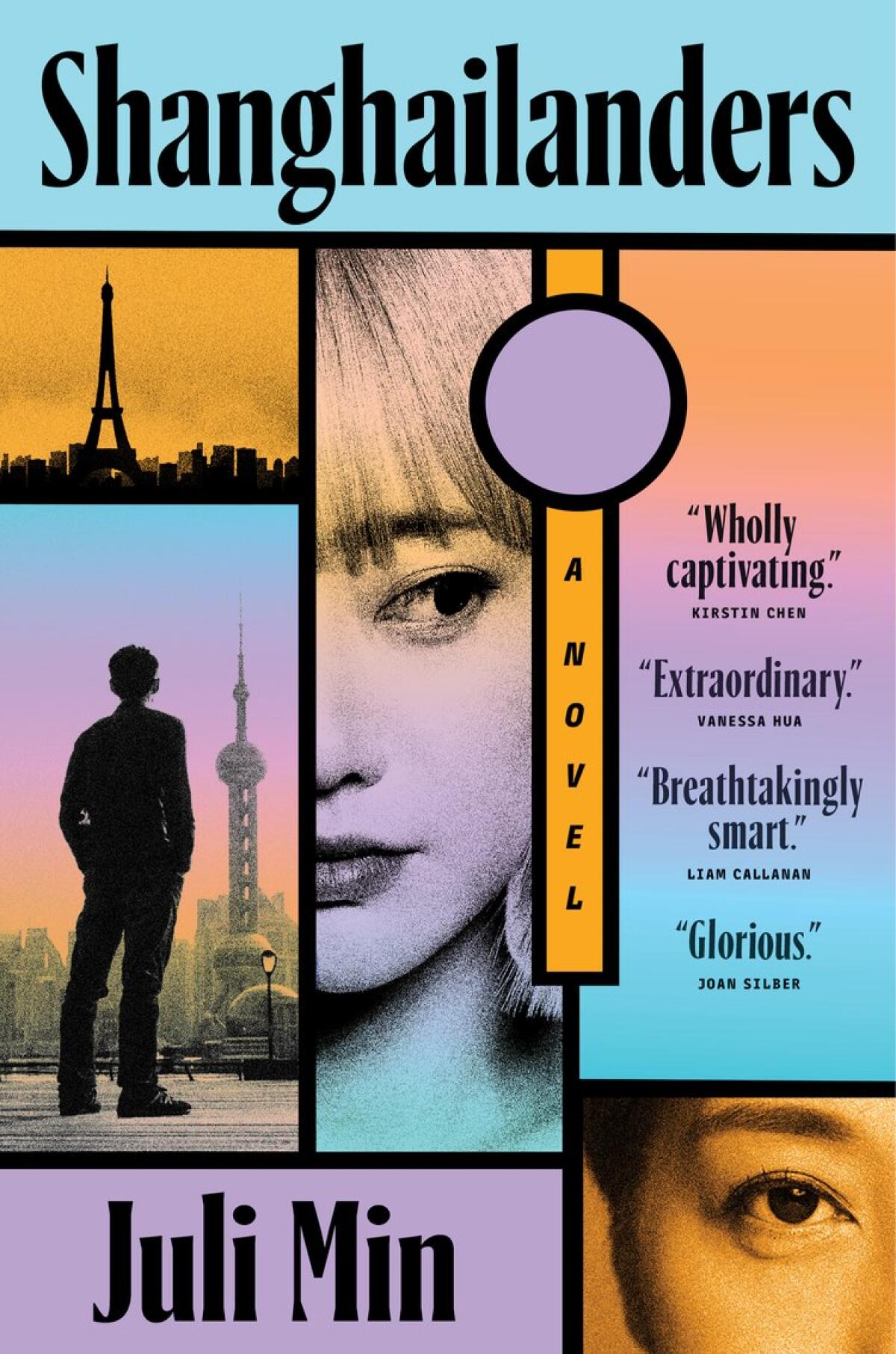
Unspooling backward from an imagined 2040 to 2014, this novel shows a Chinese family coping with 21st-century pressures and pleasures across three continents. The Yangs — father Leo, mother Eko and eldest daughters Yumi and Yoko — will interact with the “baby” of the family, Kiko; a long-suffering nanny, or ayi ; and a cab driver, in chapters that spiral back to a denouement as sophisticated and affecting as Leo, “a real Shanghai man.”
Blue Ruin: A Novel By Hari Kunzru Knopf: 272 pages, $28 (May 16)

Kunzru’s novel ends a trilogy speaking to current problems of racism, right-wing politics and inequality. Struggling artist Jay is delivering groceries during the global pandemic. Not feeling well, he seeks shelter with an ex-girlfriend. Alice, whose husband was Jay’s art-school frenemy, hides Jay in a barn. But isolation of all kinds, including economic, ups the dramatic ante, and the three “friends” must contend with their choices.
Housemates: A Novel By Emma Copley Eisenberg Hogarth: 352 pages, $29 (May 28)
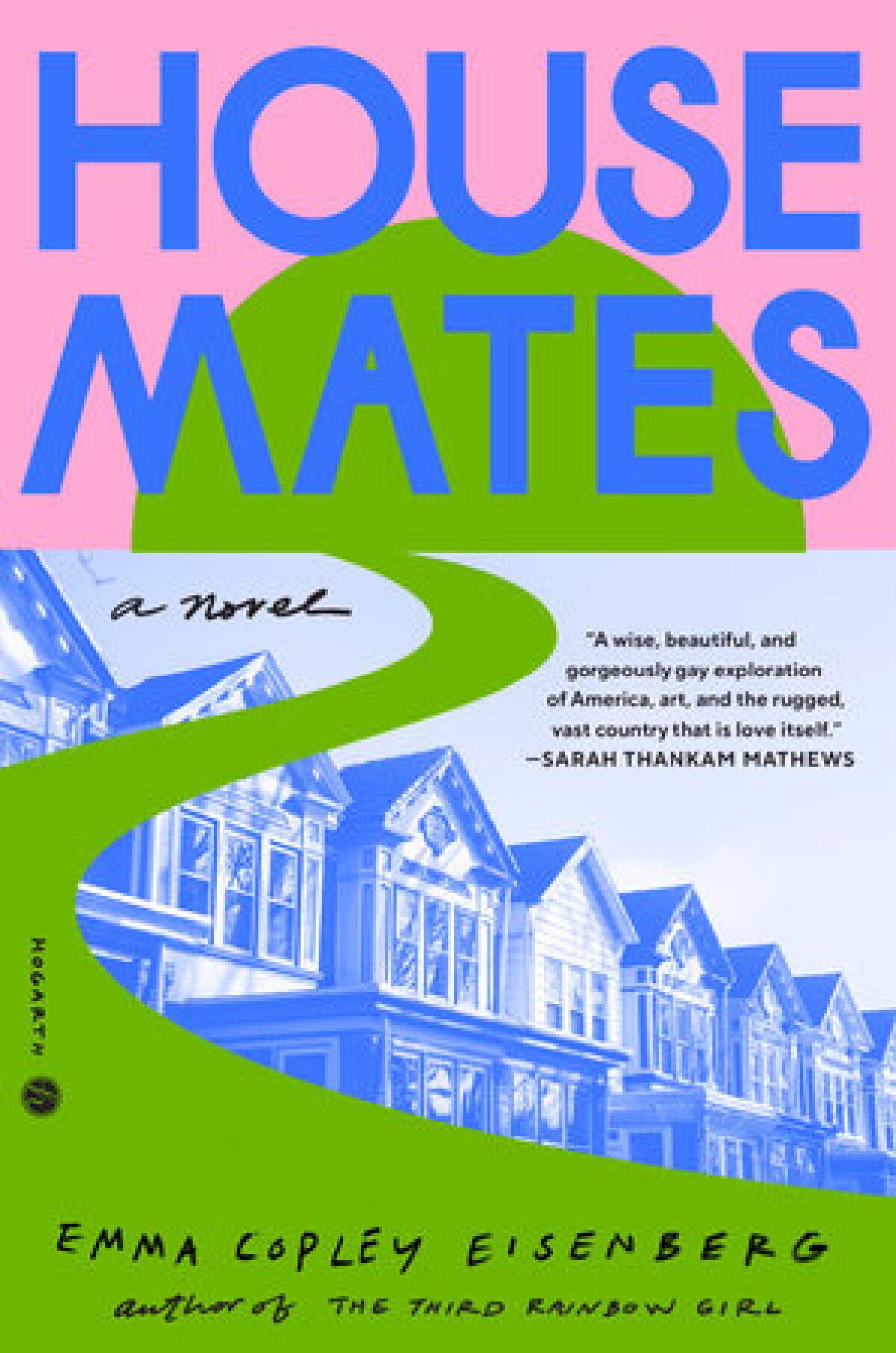
Eisenberg’s fiction debut feels like a swim in a heated pool after a long journey. Bernie and Leah, Philadelphia housemates, embark on a road trip west in order to claim some photography materials from Bernie’s onetime academic mentor. En route, the women meet all manner of characters and discuss all kinds of topics, eventually (some readers will say inevitably) falling in love with each other. They’ll never bore each other, or readers.
Exhibit: A Novel By R.O. Kwon Riverhead Books: 224 pages, $28 (May 28)

Kwon, who tackled obsessive faith in her debut, “The Incendiaries,” and obsessive intimacy in the anthology “Kink,” coedited with Garth Greenwell, here explores the landscape of obsessive desire between the married woman Jin Han and the ballet star Lidija Jung. The author elegantly uses Jin’s belief that she is cursed by an unquiet spirit as a means of expressing the torment Jin feels being divided between safety and ecstasy.
The Winner: A Novel By Teddy Wayne Harper: 320 pages, $30 (May 28)
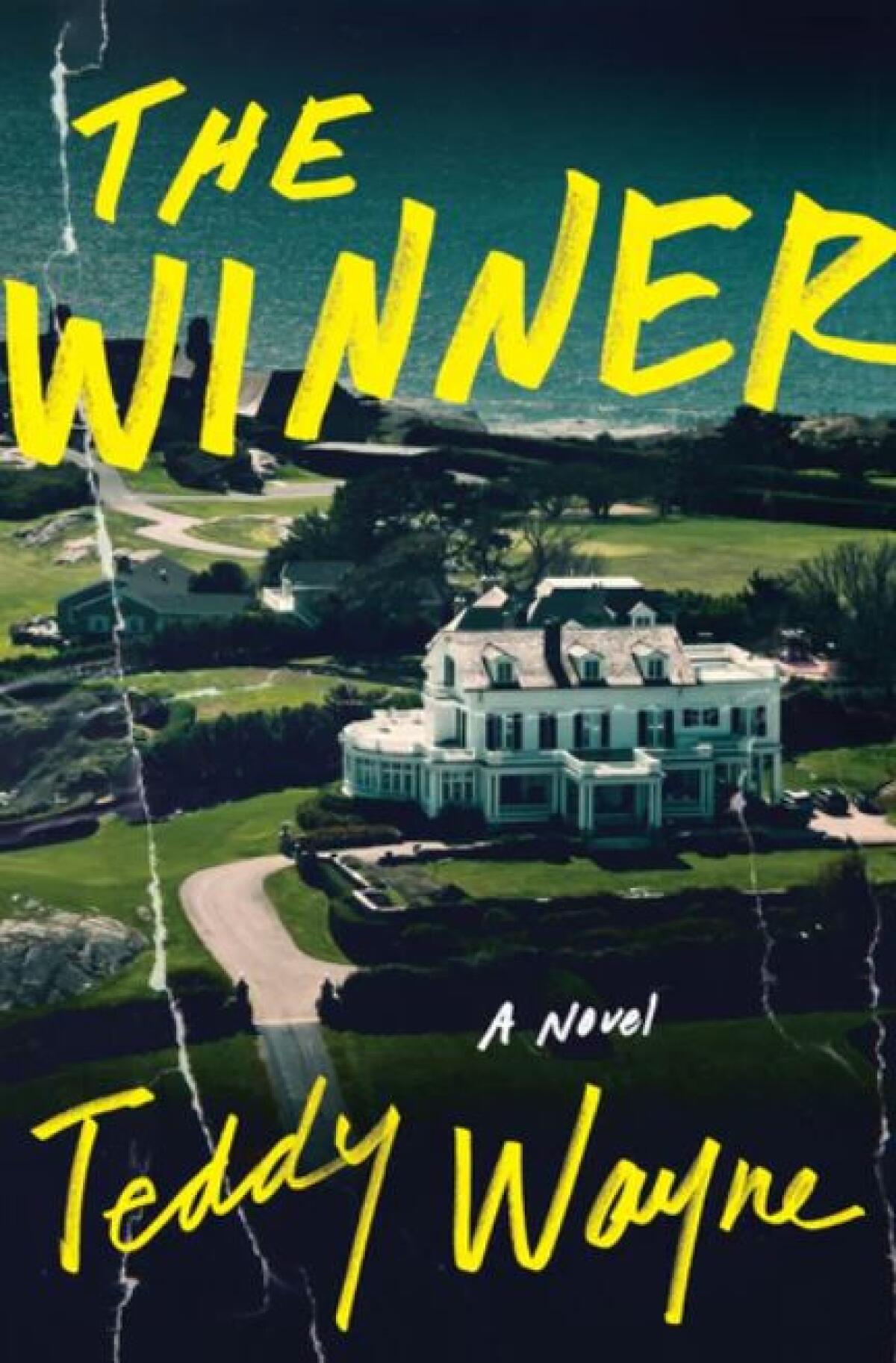
The author sees this novel as a departure from his usual work. But readers will see that even if “The Winner” has a more propulsive plot, it ties in with Wayne’s novels “Kapitoil” and “The Great Man Theory” as it also centers on socioeconomics. Conor O’Toole lands a job as a tennis pro in a wealthy community near Cape Cod and thinks he’s living a dream, juggling affairs with two women — until he hits a metaphorical foul shot.
First Love: Essays on Friendship By Lilly Dancyger Dial Press: 224 pages, $28 (May 7)
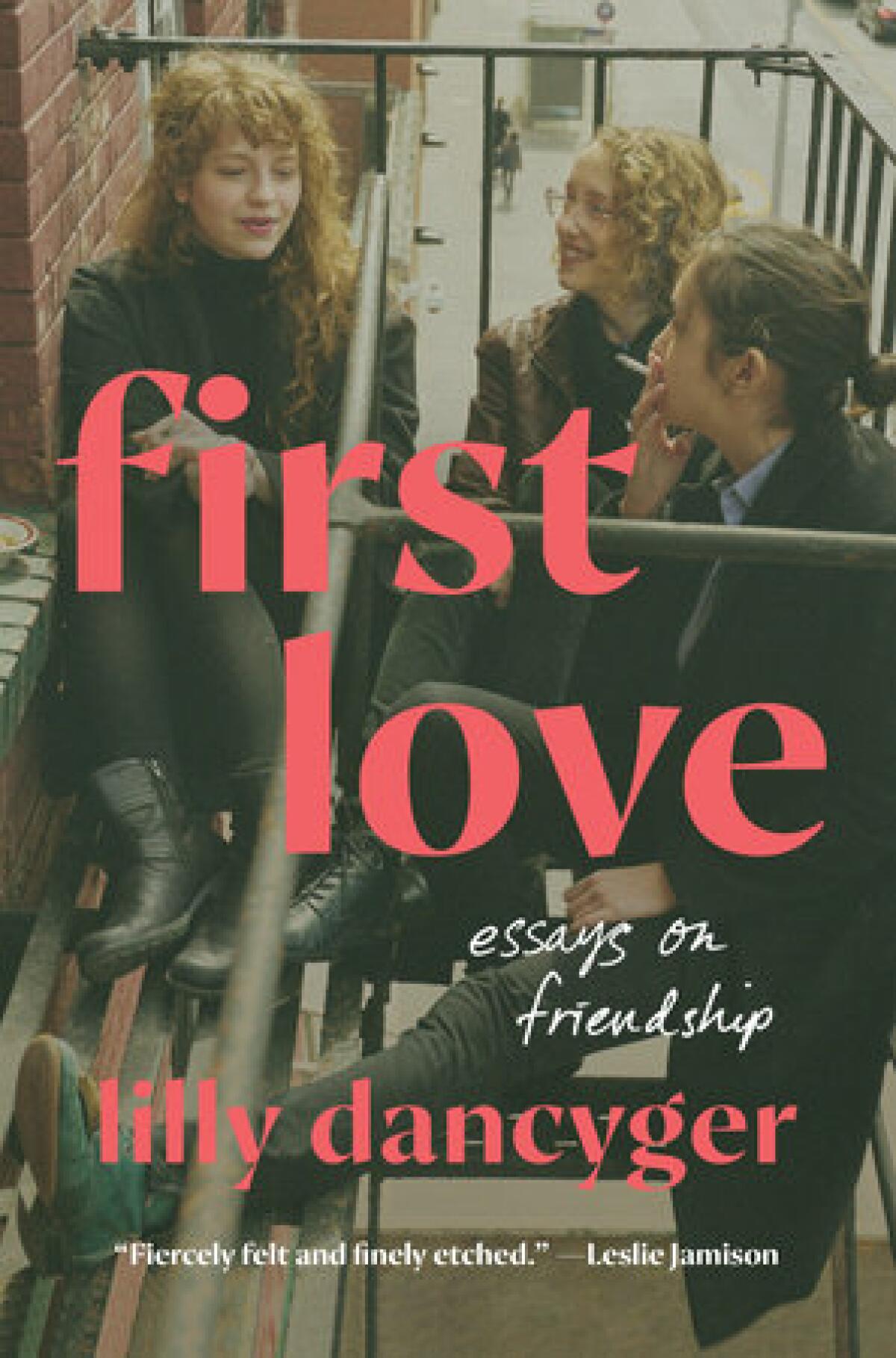
Dancyger, who has written about women and anger (“Burn It Down”) and her parents’ addiction (“Negative Space”), turns to the friendships that have sustained her. From childhood to adolescence and on to adulthood, the author’s intense bonds with other women, based on commonalities as varied as kinship, substance abuse or caregiving, place these essays integrating personal experience and cultural allusions alongside Leslie Jamison’s work.
Throne of Grace: A Mountain Man, an Epic Adventure, and the Bloody Conquest of the American West By Bob Drury and Tom Clavin St. Martin’s Press: 368 pages, $30 (May 7)
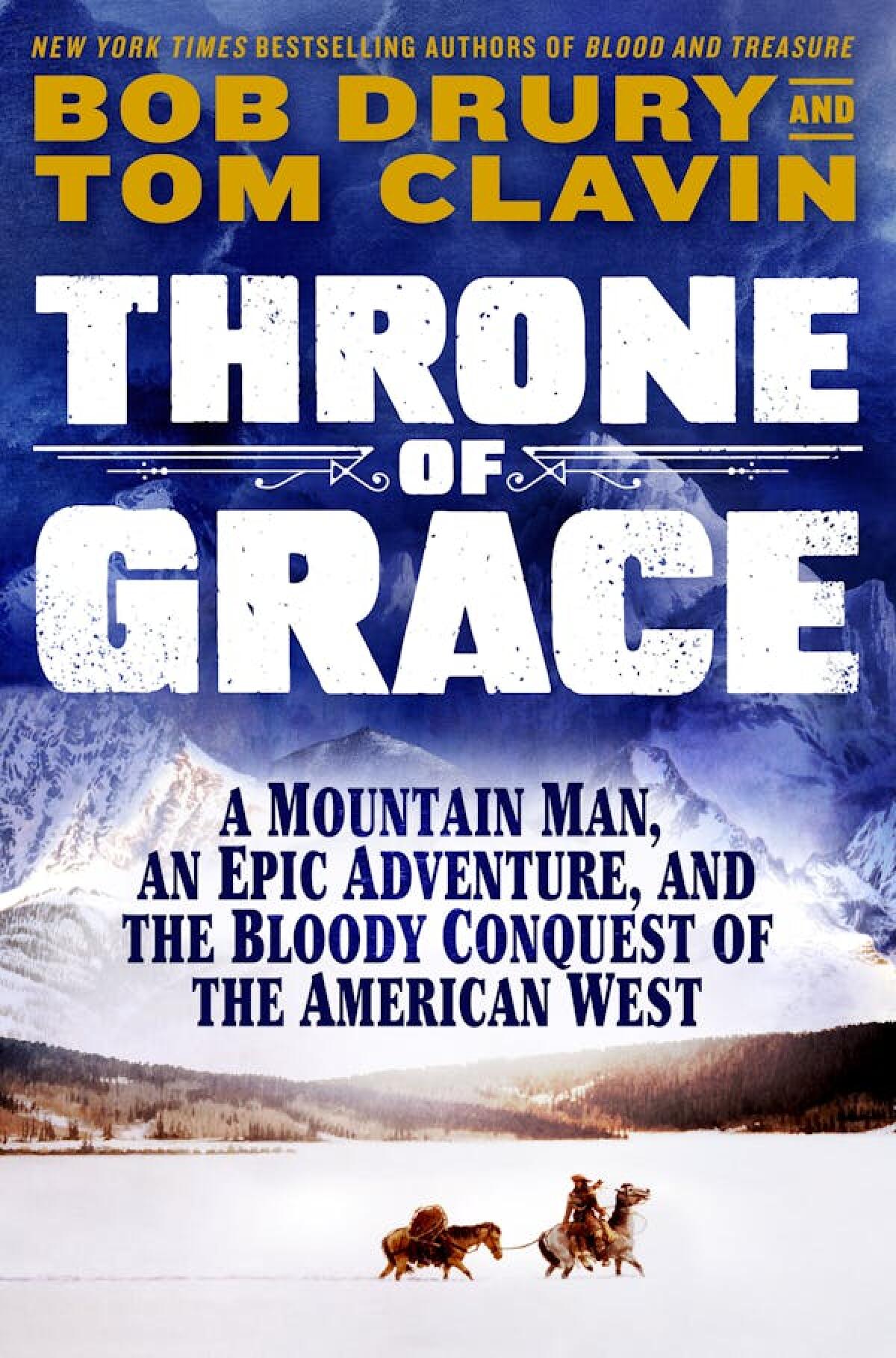
Jedediah Smith might be one of the most important, and one of the most overlooked, 19th century explorers in our nation’s history. Authors Clavin and Drury, who last wrote “Blood and Treasure,” about Daniel Boone, are correcting that oversight. Here they use Smith’s own journals, among other resources, to capture the adventures of a man who was the first white settler to see much of the territory between the Rocky Mountains and the Pacific Ocean, as well as parts of Mexico.
The Year of Living Constitutionally: One Man’s Humble Quest to Follow the Constitution’s Original Meaning By A.J. Jacobs Crown: 304 pages, $30 (May 7)
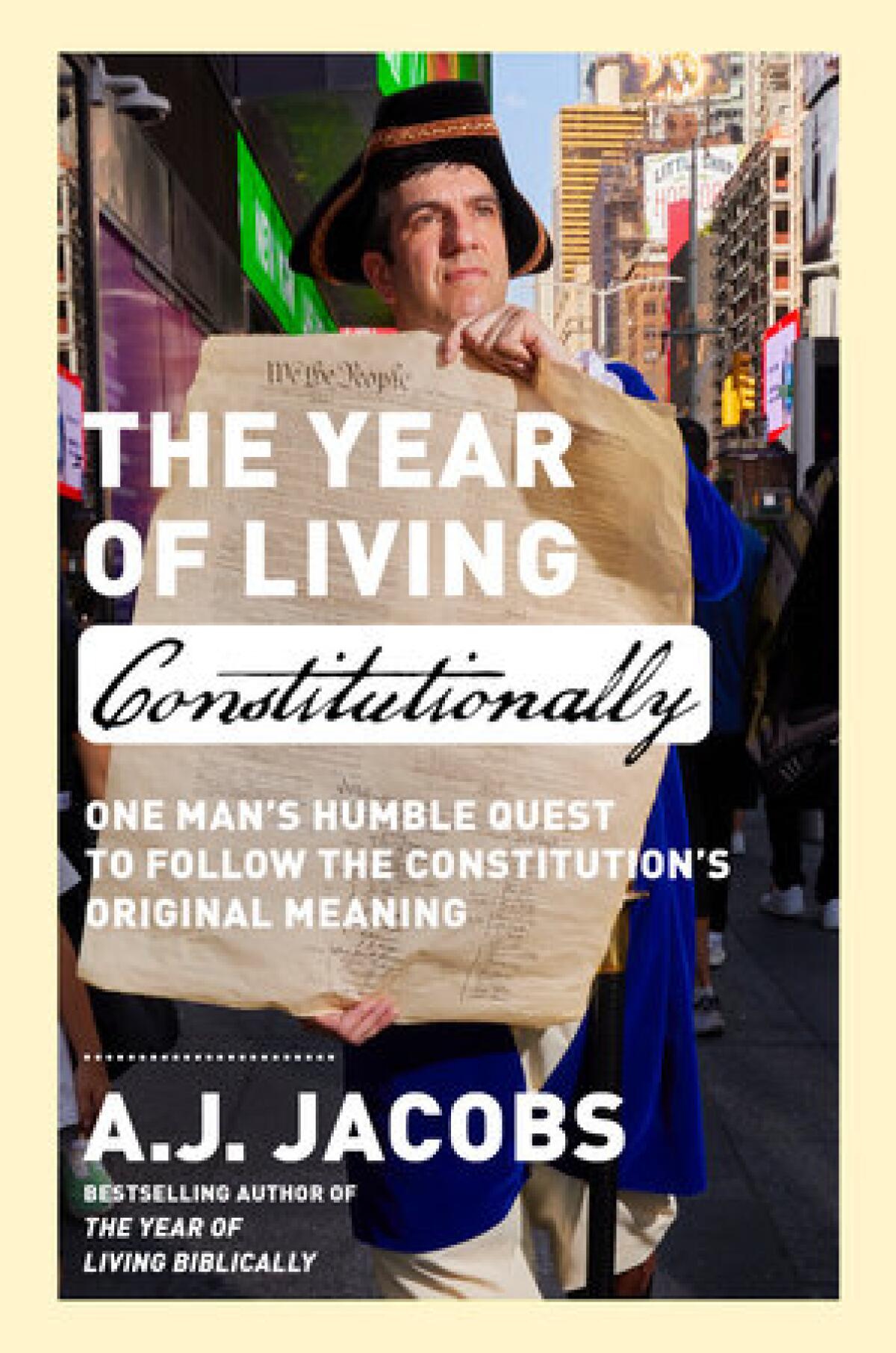
Father of the stunt memoir (“The Know-It-All”) Jacobs examines those we call our Founding Fathers in an endeavor that has the indefatigable author wearing a tricorne hat, battling Redcoat reenactors and delivering quill-written missives to strangers. He challenges assumptions about some truths we have long held to be self-evident. Oh, wait, that’s the Declaration of Independence. Time to read this book!
Love Is a Burning Thing: A Memoir By Nina St. Pierre Dutton: 320 pages, $28 (May 7)
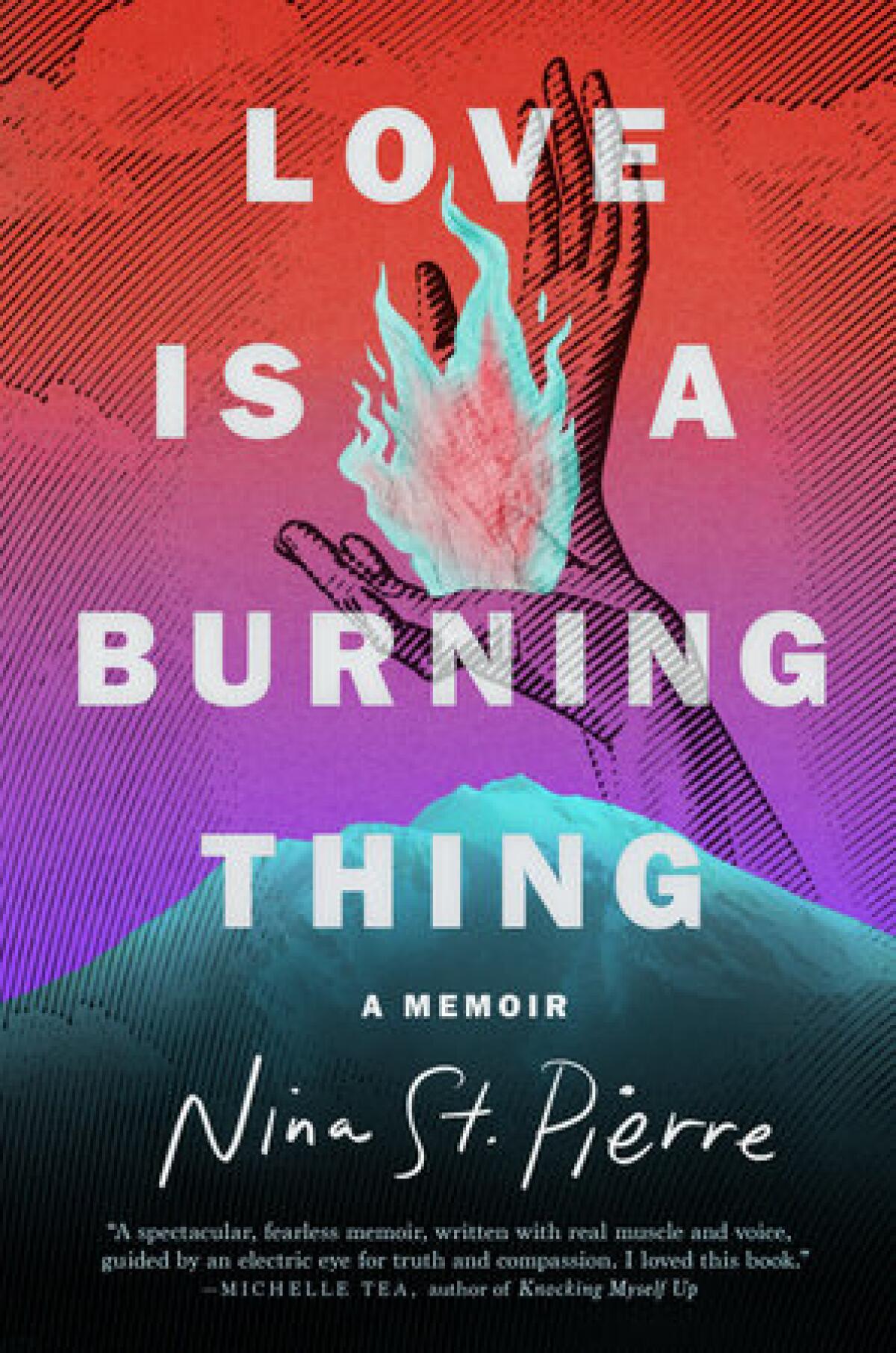
Her mother set herself on fire once, then discovered transcendental meditation. As she chased enlightenment, she moved the author and her brother all over California — until setting another fire that would result in tragedy. As St. Pierre faces her parent’s mental illness, she also investigates how and why people who lose their place in society often turn to extremes of spirituality, as well as how deep compassion can help them find real peace.
Rebel Girl: My Life as a Feminist Punk By Kathleen Hanna Ecco: 336 pages, $30 (May 14)
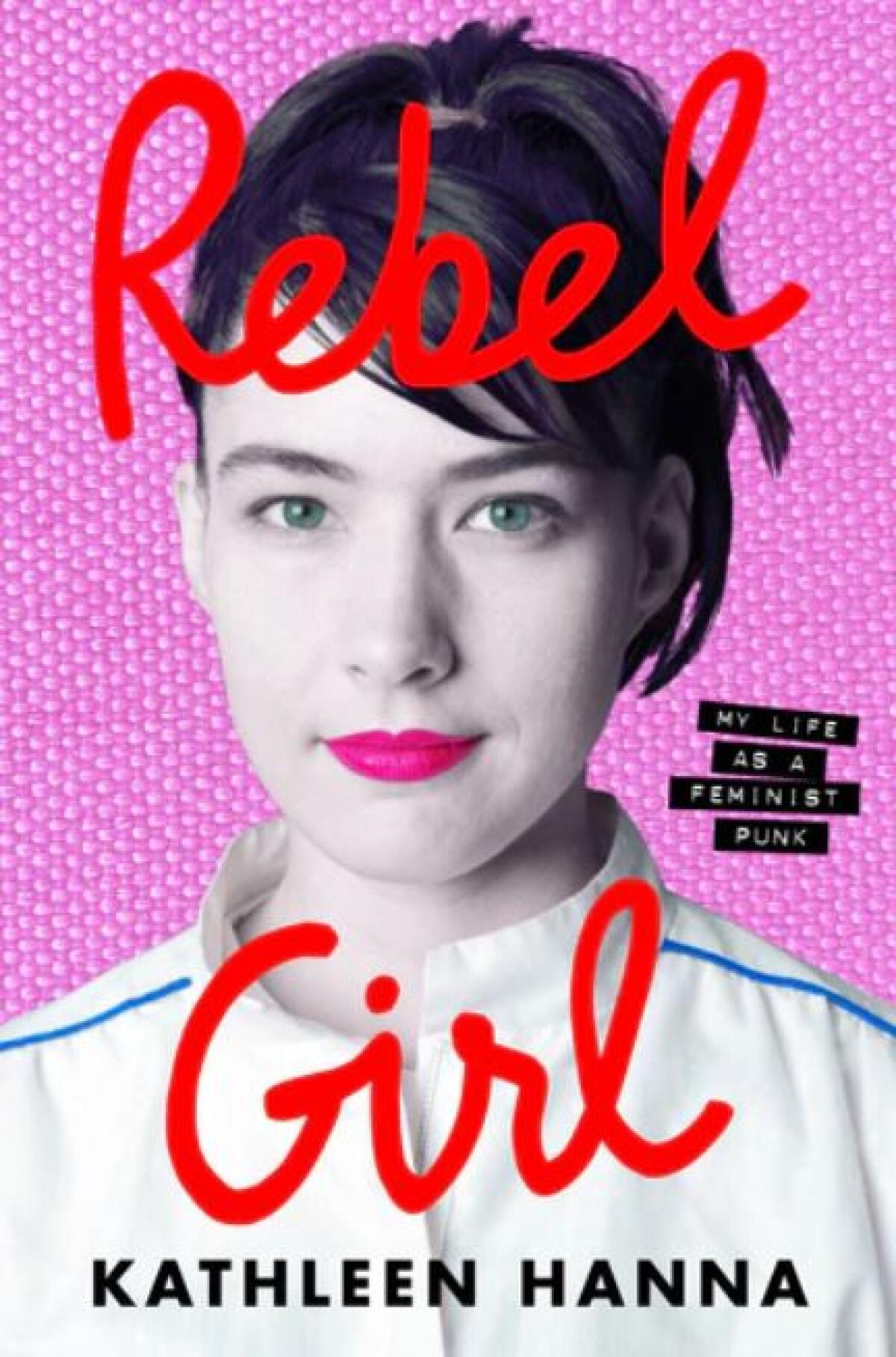
Hanna, the former Bikini Kill frontwoman and co-founder of the Riot Grrrl movement, starts with her difficult childhood and traces its influences into her future actions like “Girls to the Front” and lyrics about gender-based violence. She survived Lyme disease, married the Beastie Boys’ Adam Horovitz and became a parent. Along the way, her views have changed, but her honest, funny and raw voice has not.
More to Read

The week’s bestselling books, May 12
May 8, 2024
The week’s bestselling books, May 5
May 1, 2024
The week’s bestselling books, April 28
April 24, 2024
A cure for the common opinion
Get thought-provoking perspectives with our weekly newsletter.
You may occasionally receive promotional content from the Los Angeles Times.
More From the Los Angeles Times
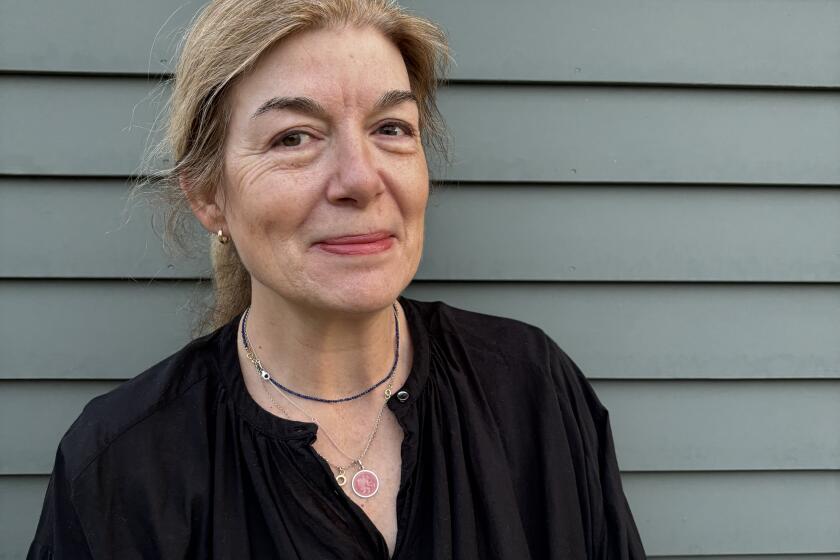
Claire Messud mixes truth and invention to tell her French Algerian family’s story
May 10, 2024

Seeking community but finding a cult in the tense, compelling ‘The Witches of Bellinas’
May 6, 2024
A champion of psychedelics who includes a dose of skepticism
May 4, 2024

Colm Tóibín’s latest tale is bound together by the tension between secrecy and revelation
May 3, 2024
- Anti-Abortion Movement
- Supreme Court
- Women in Music
- Masculinity
- Global Women’s Rights
More Than A Magazine, A Movement
- Arts & Entertainment
May 2024 Reads for the Rest of Us
The Feminist Know-It-All : You know her. You can’t stand her. Good thing she’s not here! Instead, this column by gender and women’s studies librarian Karla Strand will amplify stories of the creation, access, use and preservation of knowledge by women and girls around the world; share innovative projects and initiatives that focus on information, literacies, libraries and more; and, of course, talk about all of the books.
Each month , I provide Ms. readers with a list of new books being published by writers from historically excluded groups.
The aims of these lists are threefold:
- I want to do my part in the disruption of what has been the acceptable “norm” in the book world for far too long—white, cis, heterosexual, male;
- I want to amplify indie publishers and amazing works by writers who are women, Black, Indigenous, Latinx, APIA/AAPI, international, queer, trans, nonbinary, disabled, fat, immigrant, Muslim, neurodivergent, sex-positive or of other historically marginalized identities—you know, the rest of us; and
- I want to challenge and encourage you all to buy, borrow and read them!
Fellow feminist readers,
It’s been a rough few months—years?—for many of us. We are overworked, underappreciated and anxious about the precarious state of the world. How does one think about anything other than one’s role in saving the world and rescuing humanity from our own destruction? How do we maintain hope and strength in the face of such violence and fear?
There’s truth in the adage that we must each find our own way through the darkness to the light. That said, there is also strength in numbers and resilience in collective care. There are times to spend in solitude, in meditation or reading a good book. There are also times for collective resistance—and we’ve experienced many of those times since 2020, friends.
Recently, to fight off my own hopelessness, I’ve been heeding the call to action and helping organize support for amazing young people in my area doing courageous work in the world. I’ve had to reallocate time and energy for this work, I’ve lost some sleep, and I’ve been late for some deadlines. (Sorry!)
But I am a better person for it. For the little I’ve given, I have received a burst of inspiration, a boost in creativity, a surge of meaning and renewed hope for a world guided by the next generation.
I hope you, too, will find the joy and camaraderie of collective action, be that through a march, mutual aid or a book club. We all have roles to play and strengths to offer. We work hard, and when we tire, our peers will be there to take over, as you will do for them when they need it. That’s the power of community.
So answer the call, get in there, do your best. Then rest, read and revitalize before relieving someone else. The 24 books on my list this month are certain to help you to strategize, reenergize and mobilize.
Oh, and I’d be remiss if I didn’t mention a book that I was going to include in this month’s list before I realized it actually came out last month… ope! (That’s Midwestern for “oops.”) So I’m including Crip Spacetime by Margaret Price (Duke University Press) here because it is a wonderfully accessible and necessary book, especially for those of us who’ve spent any time in academia. You’ll find its entry below.
Black Meme: A History of The Images That Make Us
By Legacy Russell ( @ellerustle ). Verso. 192 pages. Out now.
Writer and curator Legacy Russell’s latest thought-provoking book forges a strong connection between Black imagery from 1900 on to the development of contemporary digital culture, as well as to our understanding of culture, race, gender, violence and more.
Breathe: Journeys to Healthy Binding
By Maia Kobabe ( @redgoldsparks ) and Sarah Peitzmeier ( @SarahPeitzmeier ). Dutton Books for Young Readers. 64 pages. Out now.
This is the informative graphic guide to chest binding that we’ve been waiting for. Maia Kobabe, the author of Gender Queer , and University of Michigan professor Sarah Peitzmeier talked with 25 people about binding and created this colorful volume for people of any age.
The Brides of High Hill
By Nghi Vo ( @NghiVoWriting ). Tordotcom. 128 pages. Out now.
Nghi Vo’s latest entry in The Singing Hills Cycle is number five and is just as intriguing and special as the previous four. Imaginative, kaleidoscopic and captivating, this is one of my favorite series. Read them in order or not, but read them.
Captive: New Short Fiction from Africa
Edited by Helen Moffett ( @heckitty ) and Rachel Zadok. Catalyst Press. 458 pages. Out now.
This dynamic anthology from Short Story Day Africa features some of the brightest new writers across Africa and the diaspora. Creative and candid, sharp and speculative, the stories in this collection represent Ghana, Kenya, South Africa, Lesotho, Nigeria, Zambia and more.
Crip Spacetime: Access, Failure, and Accountability in Academic Life
By Margaret Price ( @PriceMargaret ). Duke University Press. 240 pages. Out now.
In this necessary volume, Margaret Price details the results of a study she conducted on the daily experiences of academics with disabilities. After collecting over 300 interviews and surveys, Price calls for universities to learn from disabled academics and adopt their models of collective accountability and care.
Feminism Against Cisness
Edited by Emma Heaney ( @riislover667 ). Duke University Press Books. 280 pages. Out now.
In this slim but significant volume, contributors disrupt normative narratives of assigned sex as determinative of sexed experience, with specific attention paid to intersections of racism, sexism and classism. It features outstanding essays by Marquis Bey, Grace Lavery, Jules Gill-Peterson and others.
How It Works Out: A Novel
By Myriam Lacroix ( @myriamontheoutside ). The Overlook Press. 240 pages. Out now.
Tegan and Sara Quin called this one “a delightfully bizarre and unabashedly queer revelation.” Indeed, Myriam Lacroix’s sad and hilarious debut is about love, possibilities, and queerness, with a pinch of body horror.
Not a River: A Novel
By Selva Almada ( @selva.almada ). Graywolf Press. 104 pages. Out now.
Mystery surrounds an unnamed South American river in this dreamlike novella. It’s where a man drowned and where his friends struggle to reel in a stingray before just shooting it. Dark and atmospheric, Almada’s latest grapples with violence, masculinity and memory.
One Second at a Time: My Story of Pain and Reclamation
By Diane Morrisseau with Elisabeth Brannigan . Purich Publishing. 180 pages. Out now.
Diane Morrisseau has overcome a lifetime of abuse, from her time in a residential school to a violent husband of 18 years. The cause of the most trauma remains the colonial systems that maintain oppression and refuse to protect her. In spite of it all, she’s been able to use her experiences to help other women heal.
Troubled Waters
By Mary Annaïse Heglar ( @mary.heglar ). Harper Muse. 336 pages. Out now.
With themes of climate change, loss, secrets and struggle, Troubled Waters is a powerful statement about the strength of family in overcoming demons, past and present. Based on her own family’s history, Heglar offers an emotional narrative that encourages reflection and demands resistance.
Unbuild Walls: Why Immigrant Justice Needs Abolition
By Silky Shah ( @silkys13 ). Haymarket Books. 256 pages. Out now.
In Unbuild Walls , organizer Silky Shah provides an exceptional explanation of how systems of immigration and incarceration are intimately connected and ultimately feed one another’s oppressive aims. Shah argues that we can achieve true liberation by embracing an abolitionist framework, and she provides the tools to do so.
Rebel Girl: My Life as a Feminist Punk
By Kathleen Hanna ( @mskathleenhanna ). Ecco. 336 pages. Out May 14.
If you are a third-wave feminist like me, you probably wanted to be Kathleen Hanna at some point in your life. In her candid memoir, the unapologetic singer of Bikini Kill shares her journey from a challenging childhood through her first shows to love, Lyme disease and Le Tigre. I double dare ya to miss this one.
Written by Layla Martinez ( @lay_martinezvicente ). Translated by Sophie Hughes and Annie McDermott ( @annielmcd ). Two Lines Press. 144 pages. Out May 14.
This debut horror is based on the author’s grandmother’s stories of Franco and the Spanish Civil War. Eerie and original, Woodworm is a haunted house ghost story exploring themes of misogyny, classism and intergenerational trauma.
American Diva: Extraordinary, Unruly, Fabulous
By Deborah Paredez ( @debparedez ). W. W. Norton & Company. 256 pages. Out May 21.
Part memoir and part diva cultural history, Deborah Paredez’s latest book blew me away. When I finished reading it, I wiped my tears and immediately watched Nadine Sierra’s 2022 Met performance of the “ Mad Scene ” in Donizetti’s Lucia di Lammermoor —and you should, too.
Cactus Country: A Boyhood Memoir
By Zoë Bossiere ( @zoebossiere ). Abrams Press. 272 pages. Out May 21.
As Zoë Bossiere found out, coming of age in a Tucson trailer park is not easy, especially when examining one’s gender, sexuality and identity. In the desert, Bossiere grappled with gender roles, embodiment, violence, racism and more, learning that even in the harshest of conditions, there is beauty and bounty to be found.
Exhibit: A Novel
By R. O. Kwon ( @ro.kwon ). Riverhead Books. 224 pages. Out May 21.
From the bestselling author of The Incendiaries comes this remarkable story that grapples with Korean womanhood, expectations, art, ambition, desire and the familial curse Jin tempts through it all. In her version of a ghost story, Kwon is masterful in writing the art of temptation, the electricity of desire and the intimacy of obsession.
Fang Si-Chi’s First Love Paradise: A Novel
Written by Yi-Han Lin. Translated by Jenna Tang . HarperVia.
Referred to as “the most influential book of Taiwan’s #MeToo movement,” this heartbreaking yet powerful story of a girl sexually abused by her teacher is based on the author’s own tragic experiences. For Yi-Han Lin, society at large is the real perpetrator of violence in this, her only published work. Readers should be aware of explicit content including minors.
The Resilience Myth: New Thinking on Grit, Strength, and Growth After Trauma
By Soraya Chemaly ( @ragebecomesher ). Atria/One Signal Publishers. 304 pages. Out May 21.
The indomitable Soraya Chemaly deconstructs the myth of individual resilience in her robust follow-up to Rage Becomes Her . While we are fed narratives of bootstraps and rugged individualism, Chemaly reminds us through research and real life that true resilience is actually based on collective care, interdependence, shared vulnerability, dynamic flexibility and love.
The Story Game
By Shze-Hui Tjoa ( @shzehui ). Tin House Books. 272 pages. Out May 21.
Shze-Hui Tjoa has written a remarkable memoir that is as tender and heartfelt as it is candid and raw. Written as conversations and stories between sisters, the inventive form is poignant and captivating in its depth and patiently unravels the complexities of childhood trauma and harm.
Undue Burden: Life and Death Decisions in Post-Roe America
By Shefali Luthra ( @shefali.luthra ). Doubleday. 368 pages. Out May 21.
National health policy expert Shefali Luthra is clear: Abortion is a basic human right, and with the Dobbs decision in 2022, the U.S. was launched into a national healthcare crisis. In Undue Burden , Luthra examines the history of abortion in the U.S., how we got here and, most importantly, what it looks like to seek and receive an abortion post- Roe.
I’m a Fool to Want You: Stories
Written by Camila Sosa Villada ( @camilaomara ). Translated by Kit Maude. Other Press. 256 pages. Out May 28.
From the author of Bad Girls , one of my favorite books of 2022, comes this collection of short stories that are just as imaginative, captivating and titillating as the debut. Centering on themes of gender, sex work, love and justice, Villada continues to shine a light on lives so often hidden in the dark.
Medicine Wheel for the Planet: A Journey Toward Personal and Ecological Healing
By Jennifer Grenz (Nlaka’pamux mixed ancestry) ( @jennifer_grenz ). University of Minnesota Press. 280 pages. Out May 28.
In her compelling new book, ecologist and scholar Jennifer Grenz bridges the gap between Western and Indigenous knowledges and epistemologies to provide a new perspective on how we can collectively and meaningfully heal and protect the Earth.
Poverty for Profit: How Corporations Get Rich off America’s Poor
By Anne Kim ( @Anne_S_Kim ). The New Press. 352 pages. Out May 28.
Anne S. Kim’s latest expose expertly disrupts the “corporate poverty complex” that continues to profit from poor families across the nation. Kim examines how industries exploit weak government social policies and systemic oppression to make millions—while leaving the most vulnerable behind.
A Witch’s Guide to Burning
By Aminder Dhaliwal ( @aminder_d ). Drawn and Quarterly. 400 pages. Out May 28.
Singe was a witch dedicated to keeping her community safe—until she was burned at the stake. But with a rain and a little help from some friends, Singe may just save her magic after all. This delightful graphic novel puts burnout and self-care in a whole new light that you won’t want to miss.
The Best Autistic and Autistic-Coded Characters in Animation
‘Easy Beauty’: A Memoir of Motherhood and Disability
The Tradwife’s Catch-22
U.S. democracy is at a dangerous inflection point—from the demise of abortion rights, to a lack of pay equity and parental leave, to skyrocketing maternal mortality, and attacks on trans health. Left unchecked, these crises will lead to wider gaps in political participation and representation. For 50 years, Ms . has been forging feminist journalism—reporting, rebelling and truth-telling from the front-lines, championing the Equal Rights Amendment, and centering the stories of those most impacted. With all that’s at stake for equality, we are redoubling our commitment for the next 50 years. In turn, we need your help, Support Ms . today with a donation—any amount that is meaningful to you . For as little as $5 each month , you’ll receive the print magazine along with our e-newsletters, action alerts, and invitations to Ms . Studios events and podcasts . We are grateful for your loyalty and ferocity .
About Karla J. Strand
You may also like:, ‘dare to be fabulous’ essay collection: 30 remarkable women on embracing our true selves.
Purdue Online Writing Lab Purdue OWL® College of Liberal Arts
Welcome to the Purdue Online Writing Lab

Welcome to the Purdue OWL
This page is brought to you by the OWL at Purdue University. When printing this page, you must include the entire legal notice.
Copyright ©1995-2018 by The Writing Lab & The OWL at Purdue and Purdue University. All rights reserved. This material may not be published, reproduced, broadcast, rewritten, or redistributed without permission. Use of this site constitutes acceptance of our terms and conditions of fair use.
The Online Writing Lab at Purdue University houses writing resources and instructional material, and we provide these as a free service of the Writing Lab at Purdue. Students, members of the community, and users worldwide will find information to assist with many writing projects. Teachers and trainers may use this material for in-class and out-of-class instruction.
The Purdue On-Campus Writing Lab and Purdue Online Writing Lab assist clients in their development as writers—no matter what their skill level—with on-campus consultations, online participation, and community engagement. The Purdue Writing Lab serves the Purdue, West Lafayette, campus and coordinates with local literacy initiatives. The Purdue OWL offers global support through online reference materials and services.
A Message From the Assistant Director of Content Development
The Purdue OWL® is committed to supporting students, instructors, and writers by offering a wide range of resources that are developed and revised with them in mind. To do this, the OWL team is always exploring possibilties for a better design, allowing accessibility and user experience to guide our process. As the OWL undergoes some changes, we welcome your feedback and suggestions by email at any time.
Please don't hesitate to contact us via our contact page if you have any questions or comments.
All the best,
Social Media
Facebook twitter.
A writer explores the complexities of her interracial relationship
Nina Sharma contemplates the power of Black and Brown love in her essay collection “The Way You Make Me Feel.”

Shortly after George Floyd’s murder in 2020, The Washington Post ran a news story about interracial families attempting to explain his death to their children. “ A man was unjustly killed here ,” a White father recalls solemnly telling his biracial Black child.
But there was a gap in the coverage: “There are no interracial couples without a white partner” featured in The Post’s article, Nina Sharma observes in her new essay collection, “ The Way You Make Me Feel: Love in Black and Brown .” Drawing variously on personal reflections, pop culture and history, Sharma makes it her project to decenter Whiteness and highlight a love that has long been relegated to the shadows: that of Black and Brown couples.
Sharma, who is Indian American, is married to Quincy Scott Jones, a Black American educator and poet whom she met at a Fourth of July barbecue, as she recollects in the anthology’s title essay. They had, she writes, grown up just one hour from each other: Jones in a majority-Black suburb of New Jersey, Sharma in Edison, N.J., a town that’s now home to one of the largest concentrations of Indian Americans in the country.
In 16 essays spanning 300 pages, Sharma chronicles her relationship and places it in conversation with other Afro-Asian love stories. Among them are that of the Black-Indian couple at the center of Mira Nair’s 1991 film, “Mississippi Masala,” and the story of Vice President Harris’s parents. (Sharma refers to Harris as her “time-traveling daughter” while contemplating having children of her own.)
The sweeping but focused collection demonstrates Sharma’s commitment to exploring Afro-Asian intimacy in all its beauty and complexity. In one essay, she probes Donald Trump’s indictment of racial others and grapples with her immigrant father’s complicated adulation of the former president. Using “Mad Men” as a launchpad, Sharma incisively considers the “nothingness of whiteness”: the luxury White people are accorded to make “something out of nothing,” while Black and Brown stories are always expected to make a statement.
In the book’s standout essay, “Sacrifice,” Sharma meditates on her parents’ suggestion that Quincy shave off his dreadlocks before their wedding. She compares the sanctity of a Hindu head-shaving practice, called mundan, with the violence of shaving the hair of enslaved people. “Head shaving was one of the first acts of enslavement,” Sharma writes, recounting the history of Europeans and slave traders shaving heads as a way of “cutting from enslaved Africans all ties to their place and people, all known markers of identity.”
But Sharma doesn’t simply dismiss the sacrosanct Hindu practice of tonsuring; instead, she treads carefully to highlight its nuances and considers the opposing valences that head-shaving carries in Indian and Black communities. She extends her exploration of hair to Black women’s wigs and weaves, which sometimes source hair from India and China, often selling it to consumers as “true Indian hair.” In the essay’s conclusion, Sharma refuses to comfort readers; instead, she recalls her wedding, when her older sister complimented a Black guest’s hair. “I love your hair,” her sister said. “Well, you should,” the guest replied. “It’s yours.”
As such moments prove, Sharma’s debut is remarkable for its daring, how unafraid it is to eschew rosy visions of racial solidarity. She interrogates the ongoing anti-Blackness of her family, even after her marriage to Quincy, refusing to glaze the collection with the banal optimism that assumes all people of color have joined forces to avenge racism. As a case in point, Sharma reminds us of the complicity of the Palestinian American owner of the corner market outside which George Floyd was murdered, and that of the Hmong American police officer who stood watching.
Sharma brings the same candor to her own life and its unglamorous details: her multiple mental health hospitalizations, her persistent cheating on a college boyfriend, her struggle to quit smoking cigarettes. The prose is lush, if occasionally clichéd, such as when she describes a peck on the lips as an “unbearable lightness” and concludes the book by ruminating on the undefined nature of dividing zero by zero while approaching Exit 0 on a New Jersey highway.
Although that metaphor feels strained, its nod to life’s precarity is apt: “The Way You Make Me Feel” affirms that Black and Brown existence in America comes with no guarantee of collective solidarity, no innate promise of racial equality. The path to justice is uncertain, Sharma reminds us, and we must each work hard — and be bold enough to sacrifice our own comfort — to actualize it.
Meena Venkataramanan writes stories on identity, culture and Asian American communities for The Post.
The Way You Make Me Feel
Love in Black and Brown
By Nina Sharma
Penguin. 323 pp. $27
More from Book World
Love everything about books? Make sure to subscribe to our Book Club newsletter , where Ron Charles guides you through the literary news of the week.
Check out our coverage of this year’s Pulitzer winners: Jayne Anne Phillips won the fiction prize for her novel “ Night Watch .” The nonfiction prize went to Nathan Thrall, for “ A Day in the Life of Abed Salama .” Cristina Rivera Garza received the memoir prize for “ Liliana’s Invincible Summer .” And Jonathan Eig received the biography prize for his “ King: A Life .”
Best books of 2023: See our picks for the 10 best books of 2023 or dive into the staff picks that Book World writers and editors treasured in 2023. Check out the complete lists of 50 notable works for fiction and the top 50 nonfiction books of last year.
Find your favorite genre: Three new memoirs tell stories of struggle and resilience, while five recent historical novels offer a window into other times. Audiobooks more your thing? We’ve got you covered there, too . If you’re looking for what’s new, we have a list of our most anticipated books of 2024 . And here are 10 noteworthy new titles that you might want to consider picking up this April.
We are a participant in the Amazon Services LLC Associates Program, an affiliate advertising program designed to provide a means for us to earn fees by linking to Amazon.com and affiliated sites.

- Share full article
Advertisement
Supported by
Guest Essay
A Year on Ozempic Taught Me We’re Thinking About Obesity All Wrong

By Johann Hari
Mr. Hari is a British journalist and the author of “Magic Pill: The Extraordinary Benefits — and Disturbing Risks — of the New Weight Loss Drugs.”
Ever since I was a teenager, I have dreamed of shedding a lot of weight. So when I shrank from 203 pounds to 161 in a year, I was baffled by my feelings. I was taking Ozempic, and I was haunted by the sense that I was cheating and doing something immoral.
I’m not the only one. In the United States (where I now split my time), over 70 percent of people are overweight or obese, and according to one poll, 47 percent of respondents said they were willing to pay to take the new weight-loss drugs. It’s not hard to see why. They cause users to lose an average of 10 to 20 percent of their body weight, and clinical trials suggest that the next generation of drugs (probably available soon) leads to a 24 percent loss, on average. Yet as more and more people take drugs like Ozempic, Wegovy and Mounjaro, we get more confused as a culture, bombarding anyone in the public eye who takes them with brutal shaming.
This is happening because we are trapped in a set of old stories about what obesity is and the morally acceptable ways to overcome it. But the fact that so many of us are turning to the new weight-loss drugs can be an opportunity to find a way out of that trap of shame and stigma — and to a more truthful story.
In my lifetime, obesity has exploded, from being rare to almost being the norm. I was born in 1979, and by the time I was 21, obesity rates in the United States had more than doubled . They have skyrocketed since. The obvious question is, why? And how do these new weight-loss drugs work? The answer to both lies in one word: satiety. It’s a concept that we don’t use much in everyday life but that we’ve all experienced at some point. It describes the sensation of having had enough and not wanting any more.
The primary reason we have gained weight at a pace unprecedented in human history is that our diets have radically changed in ways that have deeply undermined our ability to feel sated. My father grew up in a village in the Swiss mountains, where he ate fresh, whole foods that had been cooked from scratch and prepared on the day they were eaten. But in the 30 years between his childhood and mine, in the suburbs of London, the nature of food transformed across the Western world. He was horrified to see that almost everything I ate was reheated and heavily processed. The evidence is clear that the kind of food my father grew up eating quickly makes you feel full. But the kind of food I grew up eating, much of which is made in factories, often with artificial chemicals, left me feeling empty and as if I had a hole in my stomach. In a recent study of what American children eat, ultraprocessed food was found to make up 67 percent of their daily diet. This kind of food makes you want to eat more and more. Satiety comes late, if at all.
One scientific experiment — which I have nicknamed Cheesecake Park — seemed to me to crystallize this effect. Paul Kenny, a neuroscientist at Mount Sinai Hospital in New York, grew up in Ireland. After he moved in 2000 to the United States, when he was in his 20s, he gained 30 pounds in two years. He began to wonder if the American diet has some kind of strange effect on our brains and our cravings, so he designed an experiment to test it. He and his colleague Paul Johnson raised a group of rats in a cage and gave them an abundant supply of healthy, balanced rat chow made out of the kind of food rats had been eating for a very long time. The rats would eat it when they were hungry, and then they seemed to feel sated and stopped. They did not become fat.
But then Dr. Kenny and his colleague exposed the rats to an American diet: fried bacon, Snickers bars, cheesecake and other treats. They went crazy for it. The rats would hurl themselves into the cheesecake, gorge themselves and emerge with their faces and whiskers totally slicked with it. They quickly lost almost all interest in the healthy food, and the restraint they used to show around healthy food disappeared. Within six weeks, their obesity rates soared.
After this change, Dr. Kenny and his colleague tweaked the experiment again (in a way that seems cruel to me, a former KFC addict). They took all the processed food away and gave the rats their old healthy diet. Dr. Kenny was confident that they would eat more of it, proving that processed food had expanded their appetites. But something stranger happened. It was as though the rats no longer recognized healthy food as food at all, and they barely ate it. Only when they were starving did they reluctantly start to consume it again.
Though Dr. Kenny’s study was in rats, we can see forms of this behavior everywhere. We are all living in Cheesecake Park — and the satiety-stealing effect of industrially assembled food is evidently what has created the need for these medications. Drugs like Ozempic work precisely by making us feel full. Carel le Roux, a scientist whose research was important to the development of these drugs, says they boost what he and others once called “satiety hormones.”
Once you understand this context, it becomes clear that processed and ultraprocessed food create a raging hole of hunger, and these treatments can repair that hole. Michael Lowe, a professor of psychology at Drexel University who has studied hunger for 40 years, told me the drugs are “an artificial solution to an artificial problem.”
Yet we have reacted to this crisis largely caused by the food industry as if it were caused only by individual moral dereliction. I felt like a failure for being fat and was furious with myself for it. Why do we turn our anger inward and not outward at the main cause of the crisis? And by extension, why do we seek to shame people taking Ozempic but not those who, say, take drugs to lower their blood pressure?
The answer, I think, lies in two very old notions. The first is the belief that obesity is a sin. When Pope Gregory I laid out the seven deadly sins in the sixth century, one of them was gluttony, usually illustrated with grotesque-seeming images of overweight people. Sin requires punishment before you can get to redemption. Think about the competition show “The Biggest Loser,” on which obese people starve and perform extreme forms of exercise in visible agony in order to demonstrate their repentance.
The second idea is that we are all in a competition when it comes to weight. Ours is a society full of people fighting against the forces in our food that are making us fatter. It is often painful to do this: You have to tolerate hunger or engage in extreme forms of exercise. It feels like a contest in which each thin person creates additional pressure on others to do the same. Looked at in this way, people on Ozempic can resemble athletes like the cyclist Lance Armstrong who used performance-enhancing drugs. Those who manage their weight without drugs might think, “I worked hard for this, and you get it for as little as a weekly jab?”
We can’t find our way to a sane, nontoxic conversation about obesity or Ozempic until we bring these rarely spoken thoughts into the open and reckon with them. You’re not a sinner for gaining weight. You’re a typical product of a dysfunctional environment that makes it very hard to feel full. If you are angry about these drugs, remember the competition isn’t between you and your neighbor who’s on weight-loss drugs. It’s between you and a food industry constantly designing new ways to undermine your satiety. If anyone is the cheat here, it’s that industry. We should be united in a struggle against it and its products, not against desperate people trying to find a way out of this trap.
There are extraordinary benefits as well as disturbing risks associated with weight-loss drugs. Reducing or reversing obesity hugely boosts health, on average: We know from years of studying bariatric surgery that it slashes the risks of cancer, heart disease and diabetes-related death. Early indications are that the new anti-obesity drugs are moving people in a similar radically healthier direction, massively reducing the risk of heart attack or stroke. But these drugs may increase the risk for thyroid cancer. I am worried they diminish muscle mass and fear they may supercharge eating disorders. This is a complex picture in which the evidence has to be weighed very carefully.
But we can’t do that if we remain lost in stories inherited from premodern popes or in a senseless competition that leaves us all, in the end, losers. Do we want these weight loss drugs to be another opportunity to tear one another down? Or do we want to realize that the food industry has profoundly altered the appetites of us all — leaving us trapped in the same cage, scrambling to find a way out?
Johann Hari is a British journalist and the author of “Magic Pill: The Extraordinary Benefits — and Disturbing Risks — of the New Weight Loss Drugs,” among other books.
Source photographs by seamartini, The Washington Post, and Zana Munteanu via Getty Images.
The Times is committed to publishing a diversity of letters to the editor. We’d like to hear what you think about this or any of our articles. Here are some tips . And here’s our email: [email protected] .
Follow the New York Times Opinion section on Facebook , Instagram , TikTok , WhatsApp , X and Threads .
- International edition
- Australia edition
- Europe edition
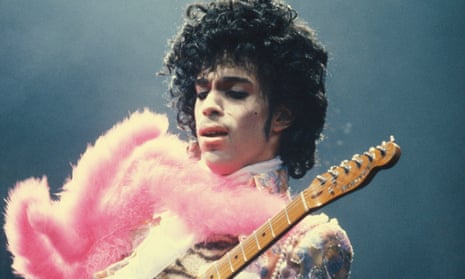
Like Love by Maggie Nelson review – music, passion and friendship
Vibrant essays from the author of The Argonauts touch on art, inspiration, and many of the central dilemmas of our times
“A s a child I had so much energy I’d lie awake and feel my organs smolder,” Maggie Nelson wrote in 2005’s Jane: A Murder . She was a dancer before she was a writer and you can feel the commitment to the fire of bodily motion in her masterpieces: the shimmeringly brutal excavation of girlhood and violence in Jane , the story of her aunt’s killing at the hands of a rapist; the clear-headed yet ecstatic celebration of the transformations of pregnancy and top surgery, and the new kind of family she and her trans partner brought into being in The Argonauts (2015). Her dedication to the material finds the forms it needs; I don’t think she sets out to bend genres. Instead, her high-stakes eviscerations of body settle into radically new forms.
Is this the energy of the rebel or the valedictorian? For decades, Nelson has parted her hair, fastened her top button, won the right grades and grants while throwing herself voluptuously into the counterculture, dreaming of being an “ electric ribbon of horniness and divine grace ” like one of her inspirations, Prince . It’s an American energy – expansive, new, full of power, pleasure, change and motion; a frontier energy, even when she’s writing about New York. We can hear Whitman behind her, and Emerson. “Power ceases in the instant of repose,” Emerson pronounces in Self-Reliance ; “it resides in the moment of transition from a past to a new state, in the shooting of a gulf, in the darting to an aim.”
A decade after The Argonauts became the bible of English graduates everywhere, the essays in Like Love arrive to help us understand Nelson’s place in a culture where, to her half-delight, she has become such a powerful voice. Spanning two decades, they range from appreciations of influences including Prince and Judith Butler , to wild, freefalling conversations with figures such as Björk, Wayne Koestenbaum and Jacqueline Rose. There is a passionate, wondering account of her formative half-erotic friendship with the singer Lhasa de Sela . The writing isn’t consistent, any more than her books are. But I like to take my thinkers and writers whole, as she does. The essays offer a kind of composite self-portrait, and illustrate how she thinks, sometimes painstakingly, sometimes with casual jubilance, about some of the central dilemmas of our time.
In the face of the climate crisis, how to avoid “giving in to the narcissistic spectacle of the slo-mo Titanic going down”? In the face of the crisis in feminism, how and whether to move beyond sexual difference? The written exchanges show her interlocutors thinking it through, too. “ You dare to step into the future like no one else atm ,” Björk says. It’s true. This is where all that restless energy is leading. This is why she’s an Emersonian, shying away from nihilism. “There are new lands, new men, new thoughts,” Emerson wrote in Nature , discarding the “dry bones” of his ancestors; “Let us demand our own works and laws and worship.”
In her powerful piece on the artist Carolee Schneemann , Nelson posits her as a female incarnation of Emerson’s self-reliant man. But it’s Nelson herself who proffers new laws and worship – whose project amounts to a practical philosophy of contemporary American culture. In The Argonauts she offers the gift of a future we can somehow share; one that acknowledges the miseries of the present, that has space for dreams, but is obstinately material and in our world. Here, in dialogue with Jacqueline Rose, she proposes that “ Everybody deserves the kind of non-stultifying internal breathing space of fluidity or instability that is attributed to queers, or to women, or whatever.”
Like Love’s title comes from writer and theatre critic Hilton Als ’s vision of a group on the subway not as white women or black men but as mouths that need filling “with something wet or dry, like love, or unfamiliar and savory, like love”. Nelson, too, is drawn to mouths – to orifices in general – as organs of pleasure and pain, and as portals enabling a radical openness.
Because Nelson likes writing about her friends, there’s a kind of homogeneity to much of the book that cumulatively left me feeling a little claustrophobic, longing especially for the roominess of time travel. With the exception of 2009’s Bluets , Nelson’s writing is so located in the postwar world that the past can feel entirely absent. This is her affinity with Emerson and Whitman again – her song to the future – but I wonder if I’m alone in wishing that, alongside those two often acknowledged ancestors, her future could have artists, activists and libertines from earlier centuries informing it, too.
Which is not to say that she’s wrong to write about the people in her circle. The brutality of the present moment may require us precisely to batten down the hatches and commit to extreme solidarity. At a time when institutional life is collapsing, when the pandemic privileged family over friends, when work expands in ways that leave many too exhausted to socialise, Nelson demonstrates what it means to dedicate yourself to a cohort with seriousness and strenuousness. “You, to me, quickly became an inspiration,” she tells the poet Brian Blanchfield , “a brother, a support in times of seriously dark waters, an editor, a lender of excellent and pivotal books, a cheerleader, a colleague, a couch sleeper (and couch mover), a fellow swimmer … a corrupting gambler, (queer) family.” Like Love may be one of the most movingly specific, the most lovingly unruly celebrations of the ethics of friendship we have.
after newsletter promotion
- Book of the day
- Society books
Most viewed

COMMENTS
To cite a book chapter, first give the author and title (in quotation marks) of the chapter cited, then information about the book as a whole and the page range of the specific chapter. The in-text citation lists the author of the chapter and the page number of the relevant passage. MLA format. Author last name, First name.
Use capital letters to write the title of the novel. For example, The Secret Garden by Frances Hodgson Burnett. Use italics and capital letters to write the name of the author and his/her other works mentioned in a book title—for example, Jane Austen's Pride and Prejudice (1813). You should use quotation marks when writing headings of short ...
Cite a book automatically in MLA. The 8 th edition of the MLA handbook highlights principles over prescriptive practices. Essentially, a writer will need to take note of primary elements in every source, such as author, title, etc. and then assort them in a general format. Thus, by using this methodology, a writer will be able to cite any ...
As a general rule, you should set titles of longer works in italics, and titles of shorter works go in quotation marks. Longer works include books, journals, TV shows, albums, plays, etc. Here's an example of a book mention: Sense and Sensibility, published in 1811, was Jane Austen's first novel. Shorter works include poems, articles ...
Citing a book chapter. Use this format if the book's chapters are written by different authors, or if the book is a collection of self-contained works (such as stories, essays, poems or plays).A similar format can be used to cite images from books or dictionary entries.If you cite several chapters from the same book, include a separate Works Cited entry for each one.
Second Initial if Given. (Year of Publication). Title of book: Subtitle if given (edition if given and is not first edition). Publisher Name. Note: Authors' names are separated by commas. Put a comma and an ampersand (&) before the name of the last author cited. Note: For works with three or more authors, the first in-text citation is shortened ...
In-text citations: Author-page style. MLA format follows the author-page method of in-text citation. This means that the author's last name and the page number (s) from which the quotation or paraphrase is taken must appear in the text, and a complete reference should appear on your Works Cited page. The author's name may appear either in the ...
Book/Ebook References. Use the same formats for both print books and ebooks. For ebooks, the format, platform, or device (e.g., Kindle) is not included in the reference. This page contains reference examples for books, including the following: Whole authored book. Whole edited book. Republished book, with editor.
To reference a book in Harvard style, you need an in-text citation and a corresponding entry in your reference list or bibliography. A basic book reference looks like this: Author surname, initial. ( Year) Book title. City: Publisher. Szalay, D. (2017) All that man is. London: Vintage. (Szalay, 2017, p. 24)
The basic format for an in-text citation is: Title of the Book (Author Last Name, year). Examples. One author: Where the Wild Things Are (Sendak, 1963) is a depiction of a child coping with his anger towards his mom. Two authors (cite both names every time): Brabant and Mooney (1986) have used the comic strip to examine evidence of sex role stereotyping.
Use the author's full name (first and last) to format it in your essay for proper credit. If a book has two authors, use both last names and initials. For works with three or more authors, use the last name of the first one and add "et all." No need to italicize author names in papers. Why Properly Cite Book Titles in Essays. The short ...
APA Citation Basics. When using APA format, follow the author-date method of in-text citation. This means that the author's last name and the year of publication for the source should appear in the text, like, for example, (Jones, 1998). One complete reference for each source should appear in the reference list at the end of the paper.
Heart of Darkness ). Place the name of a single chapter in quote marks, instead ("The Great Towns" from Condition of the Working Class in England by Friedrich Engels). APA. Italicize the book title. Capitalize the first letter, the first letter of a subtitle, and proper nouns.
In the text, when you have paraphrased an edited book chapter, cite the author (s) of the chapter and the year of publication of the book, as shown in the following examples. Parenthetical citation of a paraphrase from an edited book chapter: (Fountain, 2019) Narrative citation of a paraphrase from an edited book chapter: Fountain (2019) If the ...
2. Provide the title of the book in italics. Type the title of the book in sentence case, capitalizing only the first word and any proper nouns in the title. If the book has a subtitle, add it in sentence case after the title. Use a colon to separate the title and the subtitle. Place a period at the end.
Create manual citation. The guidelines for citing an essay in MLA format are similar to those for citing a chapter in a book. Include the author of the essay, the title of the essay, the name of the collection if the essay belongs to one, the editor of the collection or other contributors, the publication information, and the page number (s).
1. Capitalize the first letter of all nouns, verbs, and adjectives in the book name. Most words in the book name will be capitalized. In addition to the first word, you'll capitalize every significant word. [1] For example, you would write To Kill a Mockingbird, The Lord of the Rings, or Wuthering Heights. 2.
Here's the proper format for citing authors and their book titles in MLA: Last Name, First Names. Book title. City of Publication, Publisher, Year the book was published. Note: You only need to include the city of publication if the book was published before 1900 or if the publisher is not based in the US.
Use quotation marks around the title if it is part of a larger work (e.g. a chapter of a book, an article in a journal, or a page on a website). All major words in a title are capitalized. The same format is used in the Works Cited list and in the text itself. When you use the Scribbr MLA Citation Generator, the correct formatting and ...
Suddenly you are holding a hot, screaming, desperate baby, whose cries deliver electric shocks to your nervous system. She will die if you don't care for her. You are the first responder to everything: the high fever, the hot stove, the rusty nail. You choose her food, her clothes, her books, her bedtime. You are in charge of her life.
This book is a collection of 22 essays, stories about fishing, hunting, his father, fishing friends, other guides and New York City guide clients.
Books to read in May include Hari Kunzru's concluding novel in a series about racism and the memoir of 'riot grrrl' co-founder Kathleen Hanna.
Duke University Press Books. 280 pages. Out now. In this slim but significant volume, contributors disrupt normative narratives of assigned sex as determinative of sexed experience, with specific attention paid to intersections of racism, sexism and classism. It features outstanding essays by Marquis Bey, Grace Lavery, Jules Gill-Peterson and ...
Humorous, common-sensical, temperamentally conservative, Joseph Epstein may be the best familiar — that is casual, personal — essayist of the last half-century. Not, as he might point out ...
The Online Writing Lab at Purdue University houses writing resources and instructional material, and we provide these as a free service of the Writing Lab at Purdue.
In the book's standout essay, "Sacrifice," Sharma meditates on her parents' suggestion that Quincy shave off his dreadlocks before their wedding. She compares the sanctity of a Hindu head ...
Johann Hari is a British journalist and the author of "Magic Pill: The Extraordinary Benefits — and Disturbing Risks — of the New Weight Loss Drugs," among other books.
At college level, you must properly cite your sources in all essays, research papers, and other academic texts (except exams and in-class exercises). Add a citation whenever you quote, paraphrase, or summarize information or ideas from a source. You should also give full source details in a bibliography or reference list at the end of your text.
The writing isn't consistent, any more than her books are. But I like to take my thinkers and writers whole, as she does. The essays offer a kind of composite self-portrait, and illustrate how ...